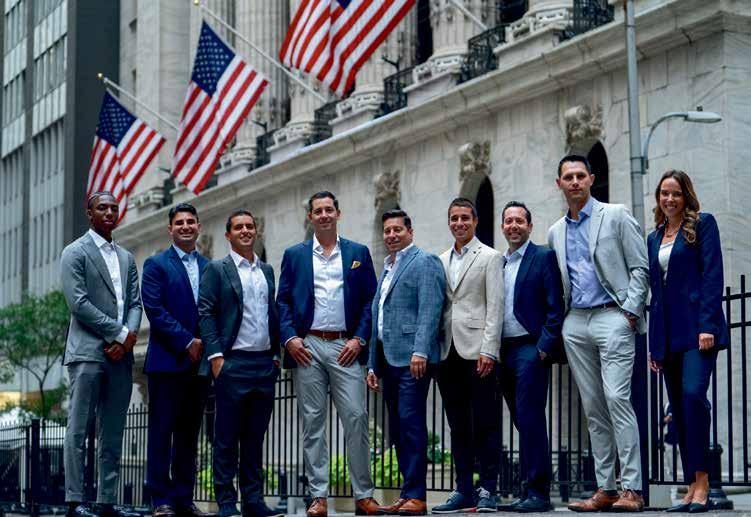
THE MEANING OF SUKKOT
LEADING BY EXAMPLE
AT MAGEN DAVID HIGH SCHOOL
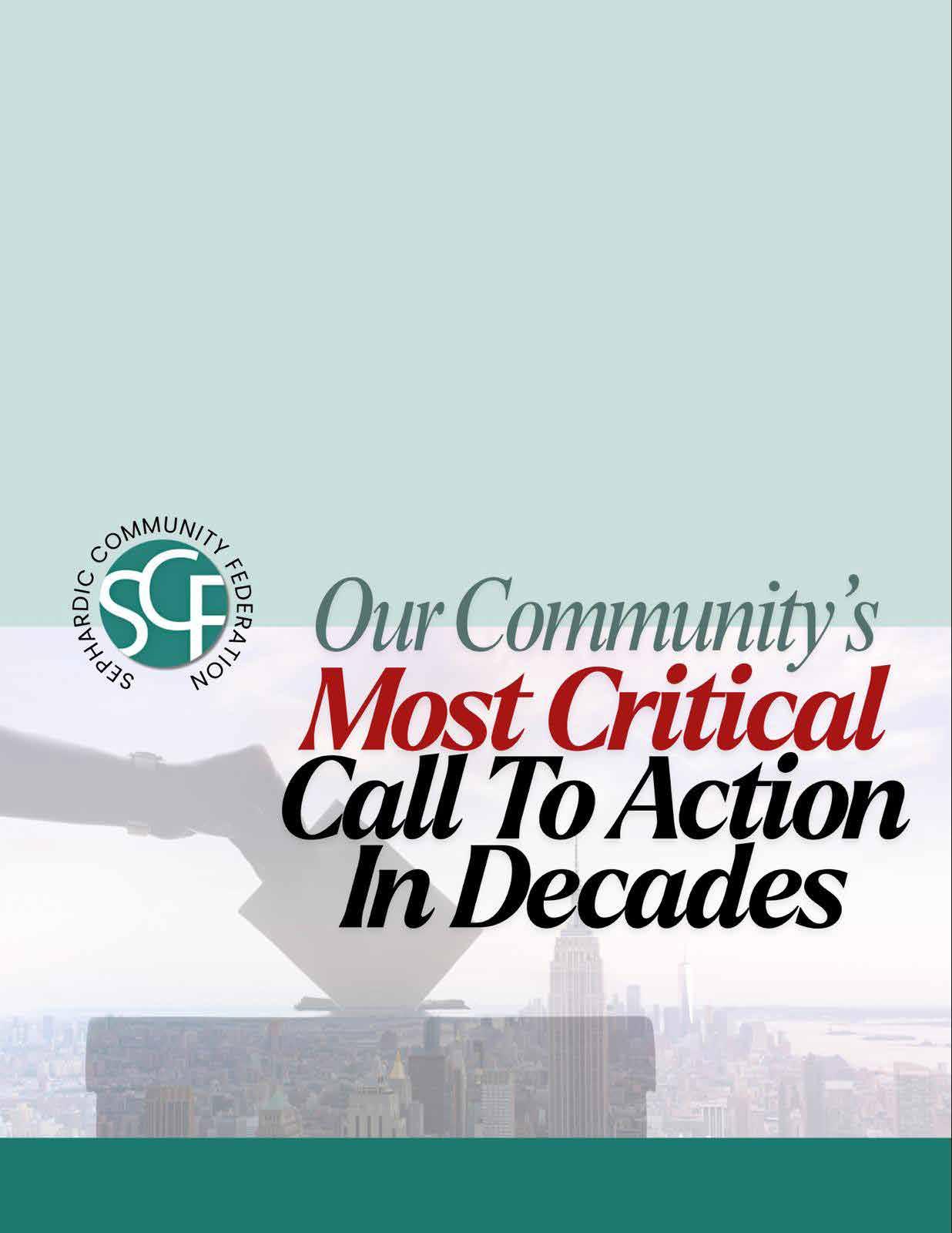
DSN TAKES GOLD AT MACCABI GAMES
WHAT’S HAPPENING AT MOUNT SINAI BROOKLYN
THE
CONSISTENCY CURE SMALL CHANGES BEAT QUICK FIXES
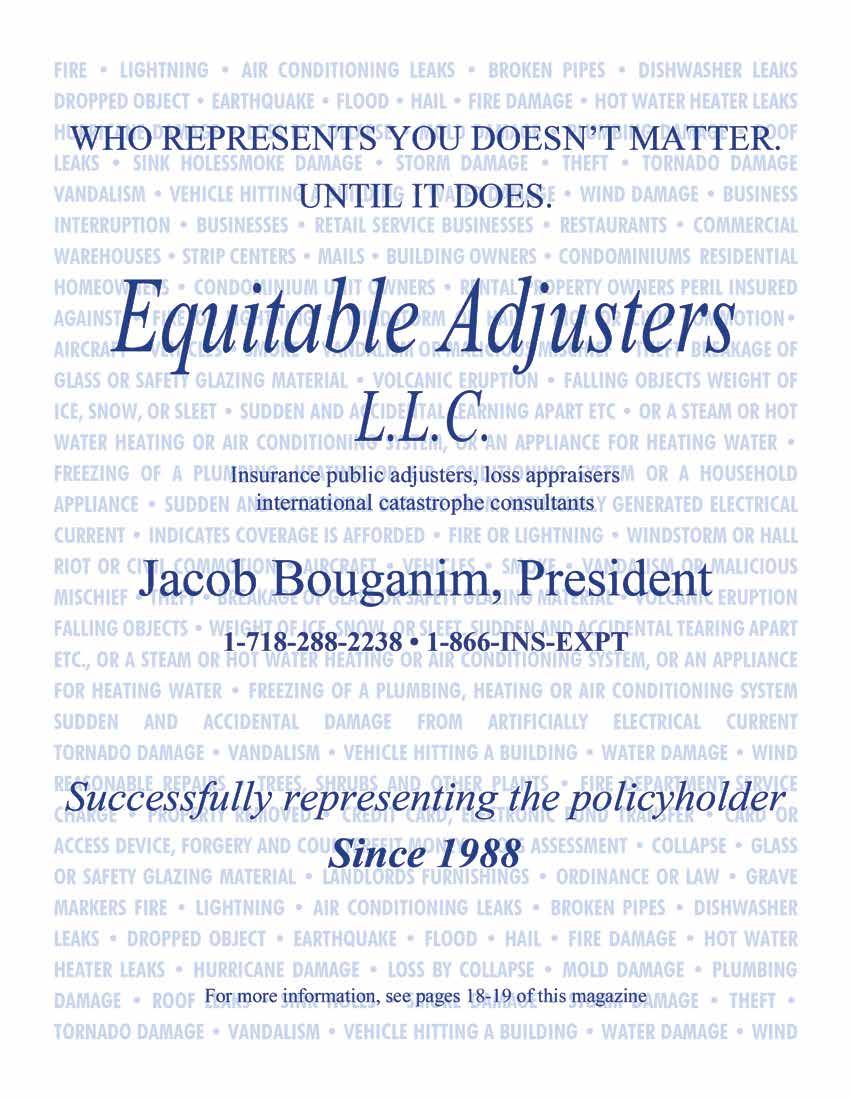
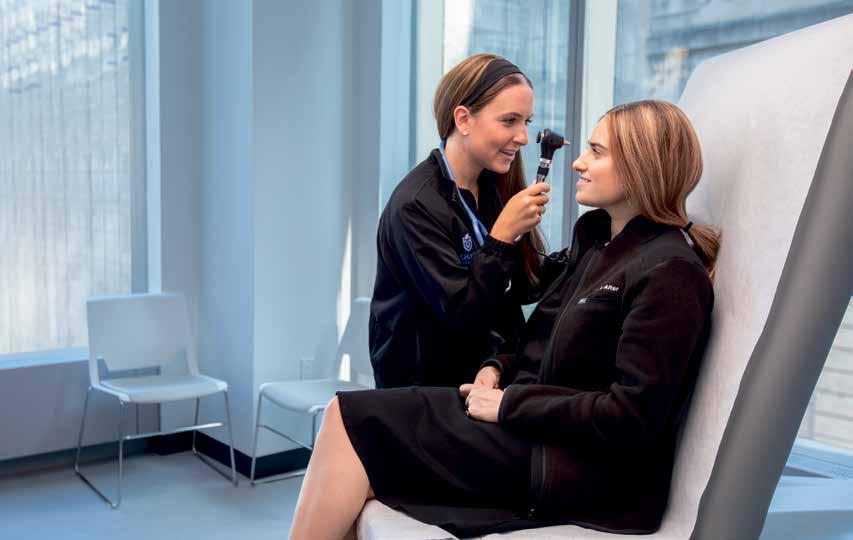


THE MEANING OF SUKKOT
LEADING BY EXAMPLE
AT MAGEN DAVID HIGH SCHOOL

DSN TAKES GOLD AT MACCABI GAMES
THE


Touro University is all in on one mission—your excellence. We’re here to help you become exceptional: highly successful, purpose-driven and ready to make a meaningful impact. The first step? Choose Touro. We’ll take you where you want to go.
MELISSA KAPLAN & SOPHIE ALTER
THE SCHOOL OF HEALTH SCIENCES, TOURO
UNIVERSITY FUTURE PHYSICIAN
ASSISTANTS








This Sukkos, we’re celebrating nearly $7 million saved for our community. That’s thousands of women walking into Yom Tov smiling, confident, and knowing they didn’t overspend to look their best.
At Zissy, it’s all about the latest fashions and brand-new-stock collections... at factory-direct prices. It’s why our Wig Week events have become the talk of every community.
And for kallahs and machatenistas, we give extra special attention. Private consultations with Zissy herself. Full wig wardrobes for Shabbos and weekday.
All the newest looks — at a fraction of the cost. Because saving millions isn’t just about money. It’s what we proudly call a Z'man Simchaseinu.











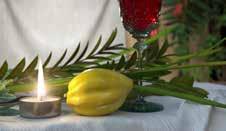

Rabbi Steven Pruzansky, Esq.
the Diary
Rabbi Lord Jonathan Sacks zt"l
The Meaning of Sukkot
Inspiring Lessons By Slovie Jungreis Wolff
The Consistency Cure Why Small, Steady Changes Beat Quick Fixes Every Time
Laura Shammah MS, RDN
Yourself Permission to Recharge
Blood Libel Returns Israel Did Not Kill Charlie
Linda Argalgi Sadacka
Charlie Kirk’s Legacy and Takeaways of His Assassination


October has arrived, and with it the crisp air of fall and the continuation of our sacred holiday season. This month we gather as a community to reflect, rejoice, and renew through Yom Kippur, Sukkot, Shemini Atzeret, and Simchat Torah. Each of these holidays carries its own message: atonement, gratitude, unity, and joy in the Torah. Together they remind us of the values that keep us grounded and connected, even as the year grows busier and colder outside.
In this issue, you will find The Meaning of Sukkot, an inspiring reflection on faith, humility, and the eternal embrace of G-d. To sweeten your holiday table, Sukkot Sweet Endings brings recipes that highlight pomegranates, figs, pears, apples, and honey, echoing the harvest and the Torah’s timeless call for gratitude. Our Torah section also explores the joy of Torah that fills our homes and synagogues as we celebrate Simchat Torah.
Our cover story, Critical Voter Registration Drive Unites the Sephardic Community, highlights an extraordinary initiative that has already brought schools, synagogues, and organizations together to ensure our voices are heard in the upcoming mayoral election. It is a powerful reminder of the strength and influence that come when our community stands united.
We are also proud to highlight community achievements: a vibrant season in Summer 2025 with SBH, DSN’s historic gold medal victory at the Maccabi Games, the dedicated faculty at Magen David Yeshivah High School who are truly Leading by Example, and the inspiring growth of Congregation Magen David of Manhattan, now flourishing under the leadership of Rabbi Joey Faur and Rabbi Sion Setton. In addition, our Community Back-to-School Photo Album captures the joy and energy of children beginning a new academic year, reflecting the pride and dedication of families and teachers alike.
We also spotlight UCEF, a remarkable initiative working to ease the tuition burden faced by so many families in our community. Their creative programs demonstrate how unity and commitment can turn a challenge into lasting success. This issue includes timely perspectives on the tragic assassination of Charlie Kirk and the false narratives about Israel that followed. Finally, our Inspirational Thoughts column offers wisdom on growth and resilience with The Power of Yet and The Power of Vulnerability.
As we celebrate and reflect, may these holidays bring you meaning, joy, and blessing. Wishing you a wonderful October and joyous chagim.
Ben-Gurion Matsas and Rachelle Fallas Matsas
VOLUME 35 ISSUE 5
Ben-Gurion Matsas PUBLISHER/EDITOR
Rachelle Fallas Matsas EDITOR-IN-CHIEF
JEWISH IMAGE
Brooklyn, NY (718) 627-4624 image@imageusa.com www.imageusa.com
Advertising Inquiries ads@imageusa.com
Editorial Inquiries editor@imageusa.com
Published Monthly.
Digital editions available on our website www.imageusa.com.
Deadline for advertisement is the 15th of the month, prior to publication.
Subscriptions available for $24 a year for 12 issues, email image@imageusa.com.
©2025 JEWISH IMAGE™ all rights reserved. All materials designed and prepared by JEWISH IMAGE™ are the sole property of the magazine and cannot be reproduced without the express permission of the publisher. The advertiser is solely responsible for ad content and holds the publisher harmless of any errors and/or copyright infringement. All articles and letters represent the opinion of each individual writer and do not reflect those of the publisher. The publisher will not be respon-sible for errors, inaccuracies or omissions of information contained within articles or advertisements. JEWISH IMAGE™ is not responsible for the Kashrut of any product or establishment mentioned herein. Nor do we endorse any products or establishments. We reserve the right to edit or reject any editorial copy or advertising at our discretion.





Through every stage of life our providers, nurses, and staff aren’t just treating patients. They’re creating a place where caring is the culture. In the exam room, in the waiting room, in every conversation.
It’s the smile from the pediatrician who remembers your child’s name.
It’s the dentist who makes sure you’re comfortable before you sit back.
It’s the therapist who listens without judgment.
It’s the internist who explains your results with patience.
It’s the eye doctor who helps you see the world clearly.
It’s not just treatment. It’s time, attention, and understanding.
It’s the feeling that you’re not just a patient, you’re a part of the Rambam family. Where health is personal. Where you matter.





RABBI LORD JONATHAN SACKS ZT”L
Time management is more than management and larger than time. It is about life itself. G-d gives us one thing above all: life itself. And He gives it to us all on equal terms. However rich we are, there are still only 24 hours in a day, 7 days in a week, and a span of years that, however long, is still all too short. Whoever we are, whatever we do, whatever gifts we have, the single most important fact about our life, on which all else depends, is how we spend our time.
“The span of our life is seventy years, or if we are strong, eighty years,” says Psalm 90, and despite the massive reduction of premature deaths in the past century, the average life expectancy around the world, according to the most recent United Nations figures (2010-2015) is 71.5 years. So, concludes the Psalm, “Teach us to number our days that we may get a heart of wisdom,” reminding us that time management is not simply a productivity tool. It is, in fact, a spiritual exercise.
Hence the following life-changing idea, which sounds simple, but isn’t. Do not rely exclusively on To Do lists. Use a diary. The most successful people schedule their most important tasks in their diary. They know that if it isn’t in there, it won’t get done. To Do lists are useful, but not sufficient. They remind us of what we have to do but not when. They fail to distinguish between what is important and what is merely urgent. They clutter the mind with trivia
and distract us when we ought to be focusing on the things that matter most in the long run. Only a diary connects what with when. And what applies to individuals applies to communities and cultures as a whole.
That is what the Jewish calendar is about. It is why chapter 23 parsha Emor, is so fundamental to the continued vitality of the Jewish people. It sets out a weekly, monthly and yearly schedule of sacred times. This is continued and extended in Parshat Behar to seven- and fifty-year schedules. The Torah forces us to remember what contemporary culture regularly forgets: that our lives must have dedicated times when we focus on the things that give life a meaning. And because we are social animals, the most important times are the ones we share. The Jewish calendar is precisely that: a structure of shared time.
We all need an identity, and every identity comes with a story. So we need a time when we remind ourselves of the story of where we came from and why we are who we are. That happens on Pesach, when we re-enact the founding moment of our people as they began their long walk to freedom.
We need a moral code, an internalized satellite navigation system to guide us through the wilderness of time. That is what we celebrate on Shavuot when we relive the moment when our ancestors stood at Sinai, made their covenant with G-d, and heard Heaven declare the Ten Commandments.

We need a regular reminder of the brevity of life itself, and hence the need to use time wisely. That is what we do on Rosh Hashanah as we stand before G-d in judgment and pray to be written in the Book of Life.
We need a time when we confront our faults, apologize for the wrong we have done, make amends, resolve to change, and ask for forgiveness. That is the work of Yom Kippur.
We need to remind ourselves that we are on a journey, that we are “strangers and sojourners” on earth, and that where we live is only a temporary dwelling. That is what we experience on Succot.
And we need, from time to time, to step back from the ceaseless pressures of work and find the rest in which we can celebrate our blessings, renew our relationships, and recover the full vigor of body and mind. That is Shabbat.
Doubtless, most people – at least, most reflective people – know that these things are important. But knowing is not enough. These are elements of a life that become real when we live them, not just when we know them. That is why they have to be in the diary, not just on a To Do list.
As Alain de Botton points out in his Religion for Atheists, we all know that it is important to mend broken relationships. But without Yom Kippur, there are psychological pressures that can make us endlessly delay such mending. If we are the offended party, we may not want to show other people our hurt. It makes us look fragile, vulnerable. And if we are the offending party, it can be hard to admit our guilt, not least because we feel so guilty. As he puts it: “We can be so sorry that we find ourselves incapable of saying sorry.” The fact that Yom Kippur exists means that there is a day in the diary on which we have to do the mending – and this is made easier by the knowledge that everyone else is doing so likewise. In his words:
“It is the day itself that is making us sit here and talk about the peculiar incident six months ago when you lied and I blustered and you accused me of insincerity and I made you cry, an incident that neither of us can quite forget but that we can’t quite mention either and which has been slowly corroding the trust and love we once had for one another. It is the day that has given us the opportunity, indeed the responsibility, to stop talking of our usual business and to reopen a case we pretended to have put out of our minds. We are not satisfying ourselves, we are obeying the rules.”
Exactly so: we are obeying the rules. We are following the Jewish calendar, which takes many of the most important truths about our lives and, instead of putting them on a To Do list, writes them in the diary.
What happens when you do not have that kind of diary? Contemporary Western secular society is a casestudy in the consequences. People no longer tell the story of the nation. Hence national identities, especially in Europe, are almost a thing of the past –one reason for the return of the Far Right in countries like Austria, Holland and France.

People no longer share a moral code, which is why students in universities seek to ban speakers with whose views they disagree. When there is no shared code, there can be no reasoned argument, only the use of force.
As for remembering the brevity of life, Roman Krznaric reminds us that modern society is “geared to distract us from death. Advertising creates a world where everyone is forever young. We shunt the elderly away in care homes, out of sight and mind.” Death has become “a topic as taboo as sex was during the Victorian era.”
Atonement and forgiveness have been driven out of public life, to be replaced by public shaming, courtesy of the social media. As for Shabbat, almost everywhere in the West the day of rest has been replaced by the sacred day of shopping, and rest itself replaced by the relentless tyranny of smartphones.
Fifty years ago, the most widespread prediction was that by now almost everything would have been automated. The work week would be down to 20 hours and our biggest problem would be what to do with all our leisure. Instead, most people today find themselves working harder than ever with less and less time to pursue the things that make life meaningful. As Leon Kass recently put it, people “still hope to find meaning in their lives,” but they are increasingly confused about “what a worthy life might look like, and about how they might be able to live one.”
Hence the life-changing magic of the Jewish calendar. Philosophy seeks timeless truths. Judaism, by contrast, takes truths and translates them into time in the form of sacred, shared moments when we experience the great truths by living them. So: whatever you want to achieve, write it in the diary or it will not happen. And live by the Jewish calendar if you want to experience, not just occasionally think about, the things that give life a meaning.

When a loss occurs, before you call your insurance company or insurance broker, call me to see how your policy coverages and endorsements relate to your loss.

It’s Simple: You Purchase Insurance For Your Home And Business... You Sustain A Loss... We Make Insurance Companies Do What They’re Supposed To Do!
•
•
•
•
•

•
•
•
•

EDDIE M ESSES AND SARI J SETTON
THE SEPHARDIC COMMUNITY FEDERATION (SCF) HAS LAUNCHED ONE OF THE MOST AMBITIOUS VOTER REGISTRATION DRIVES IN THE HISTORY OF OUR COMMUNITY. LED BY HAIM DABAH AND MARSHALL ARONOW, IN PARTNERSHIP WITH SCF’S EXECUTIVE TEAM—RONNIE TAWIL, SARI SETTON, EDDIE ESSES, JOEY SABAN, JOE MANSOUR, AND CHARLES CHAKKALO. THIS UNPRECEDENTED INITIATIVE IS ALREADY RESHAPING CIVIC ENGAGEMENT ACROSS OUR COMMUNITY, HAVING REGISTERED THOUSANDS OF NEW VOTERS WITH THE GOAL OF ADDING MANY THOUSANDS MORE BEFORE THE NOVEMBER MAYORAL ELECTION.
The campaign was launched this past August at a meeting hosted by Haim Dabah at his home in Deal, NJ. Leaders from schools, synagogues, and community institutions gathered for a powerful morning of strategy and planning. Presentations by Haim Dabah, Marshall Aronow, and Ronnie Tawil set the tone for the weeks ahead, followed by a lively discussion among the assembled leadership. In addition to uniting our institutions around this mission, the meeting also raised enough money to fund the campaign’s rollout.
From that moment, the SCF team, guided daily by Haim and Marshall, set in motion a wide-ranging and highly coordinated effort:
• Rabbinical Proclamation: A landmark statement, signed by the majority of our community Rabbis, declared that registering to vote is both an obligation and a mitzvah, energizing the effort with moral clarity.
• School-Based Registration: Magen David Yeshivah, under the leadership of Gladys Haddad, mandated voter registration among its parent body in order to receive class cards. The result was extraordinary: a 99% registration rate in just three days. Yeshivot nationwide have since reached out, seeking to replicate this model.
• Synagogue Engagement: Congregation Shaare


Zion instituted a policy requiring voter registration to reserve High Holiday seats, demonstrating the alignment of our institutions behind this effort.
• Community Registration Tables: Under the leadership of Linda Ebani, along with Rebecca Harary, volunteers have been running registration drives at summer events, synagogues, and local stores across Brooklyn, engaging our community at every level.
• Door-to-Door Canvassing: Joey Saban led a professional door-to-door campaign that has registered significant numbers of voters directly at their doorsteps.
• Direct Texting Campaign: Most recently, the group launched a major texting initiative targeting unregistered voters. In just a few days, the effort has registered hundreds, and it is rapidly expanding to registering thousands.
Together, these initiatives have already registered thousands of voters in just weeks. The goal is to register many thousands more before November, ensuring that our
community’s voice is heard loud and clear in this critical mayoral election and all future elections.
This campaign is a testament to what can be achieved when vision, leadership, and unity come together. The extraordinary dedication of Haim Dabah and Marshall Aronow, combined with the tireless efforts of the SCF team, has inspired a wave of civic engagement unlike anything our community has seen before.
With the upcoming mayoral election, we are living through uncertain times that call for decisive efforts, and community leadership is stepping up to the plate. With the continued energy and unity behind this campaign, the Sephardic Community is poised to play a significant role in shaping the future of our city and state.

Dear Neighbors,
The start of a new year is a time for reflection and renewal. It is also a time to express gratitude for our families, our community, and the opportunity to live our values openly and proudly. As we enter this new year during a time of uncertainty, it is more important than ever that we stand united, support one another, and continue to live our lives with purpose, strength, and pride.
Our community has always stood strong in moments of challenge, and we will continue to do so for generations to come. We know who we are, we know what we stand for, and we will never waver. This election is a chance to stand together, to show our unity, and to build a future where New York’s Jewish community and every community thrives.

That is why today, as the highest-ranking Jewish state elected official, I am asking Eric Adams to step aside for the good of New York and am endorsing Andrew Cuomo for mayor in the general election.
I also urge you all to make sure to vote on November 4th. Voting is not only a right, it is a sacred responsibility. It is how we protect our children’s future, preserve our traditions, and ensure our voices are not ignored. When we vote, we send a clear message about who we are and what we stand for: dignity, security, opportunity, and respect. In the face of rising antisemitism and growing challenges, our ballots are one of the strongest tools we have to push back, to demand accountability, and to make sure our city stays the place we love.
As your State Senator, I will continue to advocate for our safety, our kids’ schools, our quality of life, and the future of the place we all call home. May this next year bring peace, safety, and blessings to you and your loved ones.
Shana Tova U’metuka!

Senator Sam Sutton















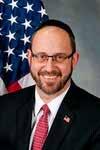

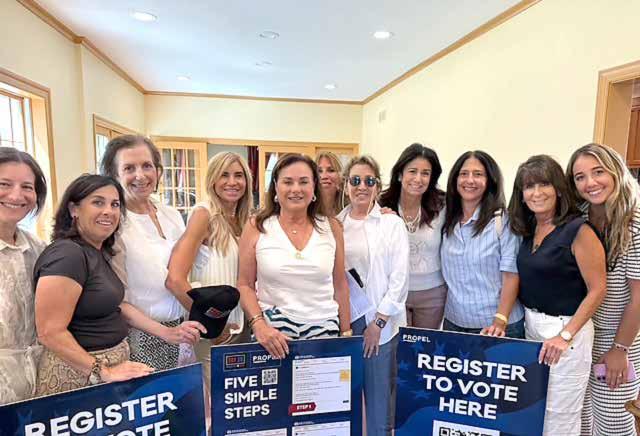

SARI SETTON
AS THE SUN BEAT DOWN RELENTLESSLY THIS PAST SUMMER, A DEDICATED GROUP OF INDIVIDUALS EMERGED AS SHINING EXAMPLES OF COMMITMENT AND COMMUNITY SPIRIT. THROUGHOUT THE SEASON AND IN THE SWELTERING HEAT, THESE CHAMPIONS OF CIVIC ENGAGEMENT TIRELESSLY WORKED TO MOBILIZE VOTER REGISTRATION IN THE SEPHARDIC COMMUNITY. THEIR READINESS TO LEND THEIR TALENT AND TIME, ENGAGE WITH COMMUNITY MEMBERS, AND ENCOURAGE VOTER REGISTRATION WAS A TESTAMENT TO THEIR UNWAVERING BELIEF IN THE POWER OF DEMOCRACY.
With the most significant local race in recent history looming this November, the Sephardic Community Federation developed a multipronged plan to ensure that we not only protect our way of life and values, but that we are heard loud and clear in government. One integral facet was to get every eligible voter in the community registered. The SCF reached out to a well-known community leader, a true powerhouse in all she endeavors, Linda Ebani. Linda graciously accepted the role to lead, alongside Rebecca (Salame) Harary. They curated a think tank of critical thinkers, and brainstormed not only an idea, but a trending movement, decrying “If you want a SAY SO in your future, you must VOTE”. Thus, the SAYSO campaign emerged.
Linda Ebani has led voter initiatives in the Sephardic Community for over 7 years, co-founded the KHBA, and served on the SCC Board for 22 years. She is a true community leader and organizer with an innate talent for motivating and unifying the community. She remarked, “This summer we registered over 1,500 people. This will have far-reaching impact on local elections for decades to come. Our community will be a real force in local politics. I believe, along with our dedicated volunteers, we spearheaded the movement to get the community registered.”
Rebecca Harary is a founding board member of Imagine Academy, Yeshiva Prep HS, The Propel Network, and Safra Community Center, and has lent her expertise and guidance to countless community organizations and


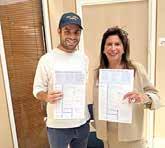

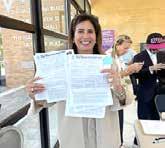

is an active community leader. Says Rebecca, “This summer our beloved community woke up to the news that the upcoming mayoral election could potentially lead to very difficult and dangerous times for all of us. By registering to vote, each and every person will now have a ‘SaySo.’ The more people we register, the louder our voice will become. Let’s keep it going!”
With the dynamic leadership of these women, volunteers felt empowered and driven. Many shared personal stories, emphasizing how their own experiences shaped their commitment to ensure that every member of the Sephardic Community has the opportunity to register and vote. They relayed that this is not just about filling out forms; it is about empowering individuals and fostering a sense of belonging. It is about fulfilling an obligation that we have as Jews and community members to practice due diligence. Each conversation they had, every question they answered, and every person they encountered was a step toward building a more engaged and informed electorate.
The impact of their work extends beyond the immediate goal of increasing voter registration. By participating in community events and fostering connections, these volunteers helped create a culture of civic responsibility within the community. Their passion and dedication are an inspiration to others to join the cause, turning a collective effort into a movement that resonates with the values of our heritage.
To those who braved the elements, who dedicated their weekends and evenings, and who poured their hearts into


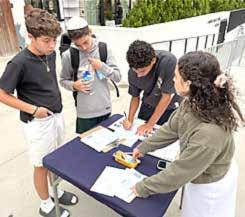



this vital mission, we offer our deepest thanks. Your commitment is not just appreciated; it is celebrated. You have shown that when we come together as a community, we can achieve remarkable things.
Linda Ebani, Rebecca Harary, Madelyn Abady, Alice Adjmi, Aileen Ades, Lisa Bailey, Bridget Ben-Dayan, Mijal Bitton, Trina Cayre, Arlene Chera, Suzie Chera, Rina Dweck, Sarise Dweck, Eddie Esses, Cindy Gindi, Robert Harary, Joelle Hedaya, Sharon Kattan, Sarah Maleh, Sadie Meyers, Esther Paskie, Joey Saban, Allison Safdieh, Gail Setton, Sari Setton, Adrianne Shamie, Victoria Sutton, Jennifer Tawil, Michele Tawil, and Stefanie Zeitounie, and to any we have inadvertently missed, thank YOU.
As we look ahead to future elections, let us carry forward the momentum you have created. Let us continue to engage, educate, and empower one another. Your hard work has laid the foundation for a brighter future, and for that, we are eternally grateful.
Thank you for your time, your energy, and your unwavering belief in the power of every single vote. Together, we can ensure that our voices are heard, our stories are told, and our community thrives. You are the heart of our democracy, and we are proud to stand alongside you as we move forward together.
“Let’s keep it going”, indeed.
Sari Setton is the executive director of the Sephardic Community Federation


EDDIE M. ESSES AND SARI J. SETTON
IN A DECISIVE VICTORY FOR COMMUNITY ADVOCACY, THE PROPOSAL TO BRING A CASINO TO CONEY ISLAND HAS EFFECTIVELY BEEN DEFEATED, THANKS IN LARGE PART TO THE TIRELESS EFFORTS OF THE SEPHARDIC COMMUNITY FEDERATION (SCF).
After five years of dedicated opposition, including an especially intense campaign over the last 10 months, SCF’s leadership and grassroots mobilization helped secure commitments from four key local officials whose decision determined the project’s fate. Brooklyn Borough President Antonio Reynoso, State Senator Jessica ScarcellaSpanton, Councilman Justin Brannan, and Assembly Member Alec Brook-Krasny have each formally announced they will vote NO on the casino plan. These four “NO” votes effectively end the Coney Island casino proposal, with the decision set to be made official on September 29.
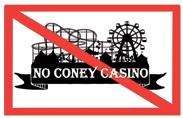
community members, and consistent messaging about the potential risks a casino would bring to our neighborhoods and families. By focusing on protecting community values and preserving the character of our neighborhoods, SCF successfully framed the debate and persuaded key decisionmakers.
“We extend our deepest gratitude to everyone who worked tirelessly, through advocacy, outreach, and collaboration, to make this outcome possible,” SCF said in a statement. “Your voices were heard, and together we made a difference.”
This outcome is a testament to the perseverance of SCF and its leaders, most notably Sam Sutton and Ronnie Tawil, who guided the effort with vision and determination. Through sustained advocacy, coalition-building, and community outreach, SCF ensured that the concerns of our community, which almost unanimously opposed the project, were not only heard but prioritized.
The campaign drew strength from years of hard work: countless meetings with elected officials, mobilization of
The defeat of the Coney Island casino is more than just a policy win. It is a powerful example of what sustained, organized community activism can achieve. For SCF and its partners, this victory reaffirms the importance of persistence, unity, and a commitment to safeguarding the future of our community.
Eddie M Esses has been civically engaged in the community for many years, working closely with Joey Saban. He is an active board member of the SCF and owns several retail franchise stores. Sari J Setton is the executive director of the Sephardic Community Federation.
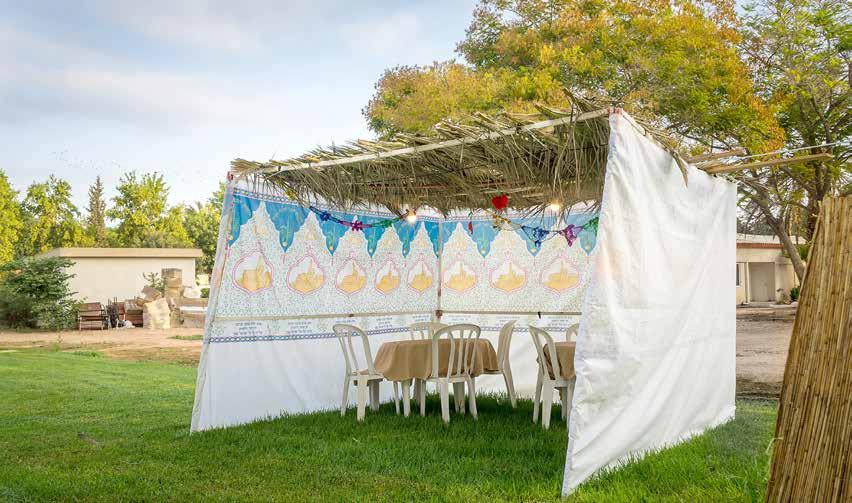
SLOVIE JUNGREIS WOLFF
The holiday of Sukkot brings us to a place of joy, celebrating our newfound connection to the spiritual energy we’ve plugged into during the High Holidays. Here are 5 life lessons to reflect upon as we sit within the wall of our sukkah.
When sitting in the sukkah one must be able to see the sky through the covering of the roof made out of leaves. It’s as if a mystical voice is calling out to us and whispering, “Look up.” Know that you will go through moments in life that will be terrifying. Your forefathers left Egypt and came into the desert wilderness not knowing how they would survive. No food. No water. The sun was scorching hot. There were snakes and scorpions. But G-d enveloped His children with Clouds of Glory that served as protection that continues to serve as a lesson until today.
The sukkah is our reminder that faith and trust in G-d is the greatest weapon to combat fear. These past few years we’ve realized how much is out of our control. The world is spinning. It may feel difficult to hold on. Lift your eyes and
see the Source of life. Don’t crumble. The sukkah is here for every single one of us to experience. Bask within the shelter of faith.
2. WE DON’T NEED ALL THE STUFF
The sukkah is a temporary dwelling. We leave our homes and for 7 days we live in the sukkah. All the comforts of home are inside. Somehow we are content, even tasting joy, as we join those we love in celebration. What happened to all the stuff we thought we needed to be happy?
The 7 days represent the seven decades of a person’s life. What really counts in the end? Life is temporary. No one wishes that they had amassed more ‘stuff’. Rather we wish we would’ve spent more time with those we cherish. We regret moments lost, words not said, and opportunities for love that never return.
Sukkot liberates us. We are given time to take a spiritual time out and think about what really matters.
3. WE COME FROM GREATNESS
Each night we are given a beautiful prayer to say as




we invite a holy guest into our sukkah. All together there are 7 ushpizin (guests), who grace our sukkah with their spiritual presence: Abraham, Isaac, Jacob, Josef, Moses, Aaron and David.
These 7 transformed a morally desolate world into a place of kindness, compassion and awareness of G-d. Each of us are given an ability to draw upon the blessings of those who came before us. Their every struggle and challenge become a stepping stone for our personal life journey.
When we realize the greatness we come from, we are given the strength to pick ourselves up and keep walking. We, too, can bring light into a world of darkness. We must only invite greatness into our lives.
A sukkah taller than 20 amot (around three stories) cannot be used. The lesson is deep. If there is one character trait that pushes G-dliness out of our lives, it is arrogance. When you are so full of yourself, there is no space for anyone else, even G-d.
If you want your life to be filled with love and meaning, discover the gift of humility. Know how to put others first. Don’t live a ‘selfie life’, where the lens is only turned on yourself. Feel the pain of another. Each day ask yourself: how is this world better because I exist? Make space for others. Be a giver.
When my child was once crying, my 6-foot 2 father bent down to hear him. He picked my little boy up, cuddled him on his shoulders and said, “No one should ever be too high to hear the cries of a child.” We are all that child. And none of us can ever feel too high to hear the cries of another.
A sukkah requires at least two complete walls plus a third wall that can even be one handbreadth.
The image is that of a hug. The sukkah is G-d’s embrace of us. Each and every one of us is precious. When you give someone a hug, you wrap your hands around their back and pull them close. Their face is not seen. So too, we are being embraced. It does not matter what we think we look like, spiritually, or mistakes we made that we believe may create obstacles as we try to plug into our souls.
Enter the sukkah and know that you are loved. Every person who wants to come close is hugged. Unconditionally. The sukkah is speaking to us. We just need to open our hearts to hear its whisper.


IT’S NOT WHAT YOU
IT’S WHAT YOU KEEP
ARI BAUM, CFP®
WHEN IT COMES TO MONEY, MOST CONVERSATIONS BEGIN WITH ONE QUESTION: HOW MUCH DO YOU MAKE? SALARY, BONUSES, BUSINESS REVENUE, INVESTMENT GAINS — ALL ARE USED AS YARDSTICKS FOR SUCCESS. BUT IF WE MEASURE FINANCIAL HEALTH BY INCOME ALONE, WE’RE MISSING THE BIGGER PICTURE. THE FACT IS, WEALTH ISN’T DEFINED BY WHAT YOU EARN. IT’S DEFINED BY WHAT YOU KEEP.
I’ve seen business owners with millions in revenue who constantly feel broke, and I’ve seen teachers and midlevel professionals quietly retire comfortably because they made smart decisions along the way. What separates them isn’t hustle, luck, or market timing. It’s discipline around preserving wealth.
High income can be deceptive. A $500,000 salary might sound impressive, but when you factor in federal, state, and local taxes, mortgage payments, private school tuition, and lifestyle upgrades, the take-home wealth may look very different.
Many professionals fall into the trap of “lifestyle inflation.” The bigger the paycheck, the bigger the house, the nicer the car, the more expensive the vacations. Suddenly, despite earning more, they’re living paycheck to paycheck — only with better scenery.
On the flip side, I’ve met clients with modest salaries who quietly built seven-figure portfolios by keeping their expenses in check and prioritizing long-term goals. It’s not about how much money flows in, but how much stays and compounds.
One of the biggest obstacles to keeping wealth is taxes. For many high earners, taxes dwarf every other line item in the budget. The IRS doesn’t care how hard you worked for that bonus or whether your investments had a good year. If you don’t plan strategically, taxes will quietly erode your ability to build wealth.
Smart planning makes a huge difference. Strategies like maximizing retirement plan contributions, Roth conversions, charitable giving, and capital-gains harvesting can help you keep more. For business owners, entity structure and timing of income recognition can save hundreds of thousands of dollars over a career.
It’s not about avoiding taxes — it’s about being efficient, so you’re not giving away more than you need to.
Keeping wealth doesn’t mean being cheap. It means aligning spending with your values and your goals. Ask yourself: Does this expense support the life I truly want?
For example, a family may choose to invest more in education or experiences, while trimming down on mate-


rial purchases that don’t add lasting value. Another might prioritize owning a vacation home because it’s central to family traditions, while choosing to drive their cars longer instead of upgrading every three years.
The point isn’t to cut spending for the sake of it — it’s to ensure money is flowing into what matters most, instead of leaking into areas that don’t.
Building wealth also depends on how you invest what you keep. Markets rise and fall, and it’s easy to get caught up in headlines. But wealth grows when you stick to a disciplined strategy — one that matches your goals, time horizon, and risk tolerance.
Too often, people chase the “next big thing” or pull back in fear during downturns. Both erode long-term wealth. By contrast, consistent investing, rebalancing, and staying the course through volatility are what create compounding — the quiet force that turns today’s savings into tomorrow’s legacy.
Finally, keeping wealth means protecting it. Unexpected events — an illness, a lawsuit, a sudden loss — can wipe away years of progress. Insurance, estate planning, and proper legal structures are not exciting dinner-table topics, but they are crucial tools for ensuring your wealth isn’t vulnerable to one bad twist of fate.
Estate planning is particularly powerful. Without it, taxes and legal complications can significantly reduce what your family inherits. With the right structures in place — trusts, beneficiary designations, gifting strategies — you can make sure your wealth is preserved and passed on according to your wishes.
Think of building wealth like training for a marathon or an Ironman. It’s not one heroic workout that makes the difference — it’s the thousands of disciplined, consistent efforts over time.
Similarly, wealth is built not through one bonus or investment win, but through the daily, weekly, and yearly decisions to keep more of what you make. You don’t need to sprint to the finish line. You need to pace yourself, avoid costly mistakes, and let time do its work.
At Endurance Wealth Partners, we remind our clients that income opens doors — but it’s stewardship that builds legacies. You can’t control every twist and turn of the economy, but you can control how much you keep, how intentionally you spend, and how strategically you plan.
It’s not what you make that defines your financial success. It’s what you keep. And what you keep — if cared for — can create freedom, security, and opportunities that last for generations.
The content is developed from sources believed to provide accurate information. Investing involves risk including the potential loss of principal. No investment strategy can guarantee a profit or protect against loss in periods of declining values. Past performance does not guarantee future results. Consult with a financial professional regarding your specific situation.
Ari Baum, CFP® is the Founder and CEO of Endurance Wealth Partners, with over 25 years of experience in the Financial Services industry. He brings his in-depth experience to Conceive. Believe. Achieve. for his clients. Securities and Advisory services offered through Prospera Financial Services Inc. Member FINRA/SIPC. Brokerage and Advisory accounts carried by Wells Fargo Clearing Services LLC.













THIS SUMMER, DSN PROUDLY RETURNED FOR THE SECOND TIME TO THE MACCABI GAMES, THE OLYMPICSTYLE SPORTING AND CULTURAL EVENT FOR JEWISH TEENS HELD ANNUALLY ACROSS NORTH AMERICA. WHAT BEGAN JUST TWO YEARS AGO AS AN OPPORTUNITY TO EXPAND DSN’S BASKETBALL PROGRAM HAS ALREADY BLOSSOMED INTO SOMETHING EXTRAORDINARY FOR OUR COMMUNITY’S YOUTH.
DSN brought 24 community athletes to Tucson, Arizona, in July, competing in two sports: basketball and tennis. DSN’s basketball team of 17-year-olds made history, becoming the first NY/NJ team to ever win a GOLD championship. In addition, its basketball team of 15-year-olds secured a BRONZE medal. In tennis, Jack Massry represented DSN in the 15-year-old division. He delivered a remarkable performance and brought home the GOLD medal. He also received a middot award for helping other players.
DSN’s 17-year-olds faced crushing adversity early on. Starter Jack Dweck tore a ligament and broke his thumb, leaving the team short-handed. After dropping three straight games, many teams might have folded, but DSN’s coach David Simhon reminded the boys of their true strength, saying, “Teams may be more skilled than us, but the one thing they don’t have that we do, we are family.” Inspired, the team rallied. Jack kept playing through his injury and






the squad went on to upset the number 3 and number 2 seeds, defeating every team they had previously lost to. In a dramatic finale, with the score tied, Bruce Epstein drained a clutch three-pointer to seal the GOLD medal victory. The celebration was electric. What started as heartbreak became a monumental triumph, showing the grit, brotherhood, and heart that defines DSN athletics.
Reflecting on the experience, DSN Sports Director Jon Entel shared, “The Maccabi Games are a marathon and a rollercoaster of emotions. Being there with these boys who have been in the DSN program for eight years now and seeing how far they’ve each come in their journey is super special. Seeing them push through adversity in an unfamiliar city and rally around one another, becoming a family that motivated each other toward greatness. This is why I love what I do.”
It was a whirlwind five days of competition, camaraderie, and unforgettable memories. From Tucson to triumph, DSN athletes showed what it means to compete with heart and pride. Next year, the journey continues as DSN heads to Kansas City, ready for new challenges and undeniably new victories.



AT MAGEN DAVID YESHIVAH HIGH SCHOOL, EDUCATION DOESN’T STOP AT THE CLASSROOM DOOR. OUR FACULTY MEMBERS ARE LIFELONG LEARNERS, CONTINUING THEIR STUDIES, PUBLISHING, AND PRESENTING, PROVING THAT LEARNING IS A LIFELONG COMMITMENT, NOT CONFINED TO A SCHOOL BUILDING OR A GRADE LEVEL.
Rabbi Eli Mansour, our renowned rabbinical leader, speaker, and author, teaches a daily Gemara class to our freshmen and inspires the entire school each Friday with his Shabbat siha. Dr. Daniel Vitow, Head of School, is teaching an engaging elective titled Foundations of Education, modeling the very principles he teaches.
From pursuing advanced degrees and publishing research to presenting at conferences and authoring books, our educators exemplify what it means to be lifelong learners, setting an inspiring example for our students every day.




Associate Principal Mrs. Audrey Abade is pursuing her doctorate through the Fanya Gottesfeld Heller Doctoral Program at Yeshiva University. This prestigious program offers an Executive EdD in Jewish Educational Leadership & Innovation, designed for professionals ready to lead in Jewish education. Coursework covers leadership across curriculum, administration, governance, student support, social-emotional learning, and community building. Students culminate their experience with a scholarly dissertation.
This year, Director of the Scholars Program Dr. Stephen Hequembourg will present at two major academic conferences: the British Milton Symposium in October and the Renaissance Society of America’s annual conference in San Francisco this February. In addition, Dr. Hequembourg has been invited to speak at Harvard University on November 10th, sharing his groundbreaking research on Galileo, Dante, and John Milton. Several of Dr. Hequembourg’s scholarly articles are also slated for publication in academic journals next year, further contributing to the field.
Over the summer, Mrs. Stephanie Shamah, Mrs. Helene Dwek, Mrs. Katie Btesh, and Mrs. Kimberly Djouejati proudly completed their M.S.Ed. in Educational Leadership: School Building and School District Leader at Brooklyn College. Over the course of this rigorous two-year program, they developed essential skills to strengthen their impact as leaders. In addition to six semesters of coursework, ranging from SchoolCommunity Relations and Education Law and Ethics to Management of Resources, they engaged in meaningful fieldwork, designing curriculum, leading professional development, and spearheading leadership initiatives across a variety of areas. Their colleague Ms. Susan Cohen is currently enrolled in the same program.


Mr. Mauricio Tawil is pursuing his B.A. in Psychology, Health Science Track, at Sara Schenirer in an accelerated, online undergraduate program offered through the University of Mount Saint Vincent.


Mrs. Maryana Sigalova is advancing her expertise by pursuing a Doctor of Education at the University of Illinois at Urbana-Champaign, College of Education. Her studies focus on Education Policy, Organization, and Leadership with a concentration in Learning Design and Leadership, equipping her with the skills to bring innovative approaches to teaching and leadership into our school community.
Ms. Stacey Wagoner is pursuing an M.Ed. in Curriculum and Instruction with an Advanced Certificate in STEM Education and Emerging Technologies, focusing on artificial intelligence in education. This summer, Ms. Wagoner completed two intensive AI courses through ISTE & ASCD, AI Exploration and Next-Level Skills, gaining cutting-edge knowledge of AI tools and teaching methods. With technology evolving rapidly, Ms. Wagoner is committed to preparing students to navigate AI responsibly and effectively, equipping them with the skills they’ll need to succeed in a workforce where AI literacy is essential. By exploring both the practical applications and ethical considerations of AI, Ms. Wagoner is helping students learn not just to use AI, but to think critically about when and how to use it wisely.

Our faculty are also published authors! Mr. Matthew Di Paoli, is the author of two acclaimed novels: Killstanbul and Holliday, both published by Sunbury Press, and Rabbi Moshe Baredes’s book, Unveiling the Dynamics Behind the Holocaust in Hungary: A New Perspective on Unfolding Events and Enduring Debates, was released on August 4 by De Gruyter. It has also been selected as one of ten Open Access history titles for 2025.

At Magen David Yeshivah High School, our faculty’s commitment to continued learning is more than personal achievement, it is a living lesson for our students. By modeling curiosity, discipline, and growth at every stage of their own careers, our educators show that learning is truly a lifelong journey. Their accomplishments not only enrich our school community today, but also inspire the next generation to pursue knowledge with passion, purpose, and perseverance.


VICTORIA SAFDIEH
PARENTING A CHILD WITH SPECIAL NEEDS CAN FEEL LIKE RUNNING A MARATHON YOU DIDN’T SIGN UP FOR. THE DAYS ARE LONG, THE HURDLES KEEP COMING, AND THERE’S BARELY A CHANCE TO CATCH YOUR BREATH. WE GIVE SO MUCH OF OURSELVES THAT IT’S EASY TO FORGET ONE SIMPLE TRUTH: YOU CAN’T KEEP GOING WITHOUT REST.
Modern life doesn’t make it easier. Work deadlines, household demands, and social pressures pile on top of the unique challenges you already carry. Over time, stress becomes the background music of daily life, so constant you almost stop hearing it. But our bodies and hearts always notice. They send quiet signals: irritability where there used to be patience, tension in places that once felt relaxed, a heavy sigh before walking through the front door. Those “yellow lights” aren’t signs you’re failing. They’re your body’s way of saying, “Hey, I need a break.” Sometimes we’re so busy
powering through that we miss the signals. That’s why it helps to leave yourself gentle reminders, like a sticky note on the fridge or even a reminder on your phone. Think of them as nudges to check in with yourself before burnout hits.
Many parents hesitate to step back. We tell ourselves: No one else can do it like I can. I should be able to handle this. My child needs me all the time. But caring for yourself isn’t about stepping away from your child, it’s about ensur-

Alwa here to help CARE Advisors are here to support families, connecting siblings, parents, and children to a wide range of programs and resources. Whether it’s referrals to schools, residential options, specialized programs, equipment, or therapies, our advisors ensure that families of children with special needs are fully taken care of!














learn more about care!

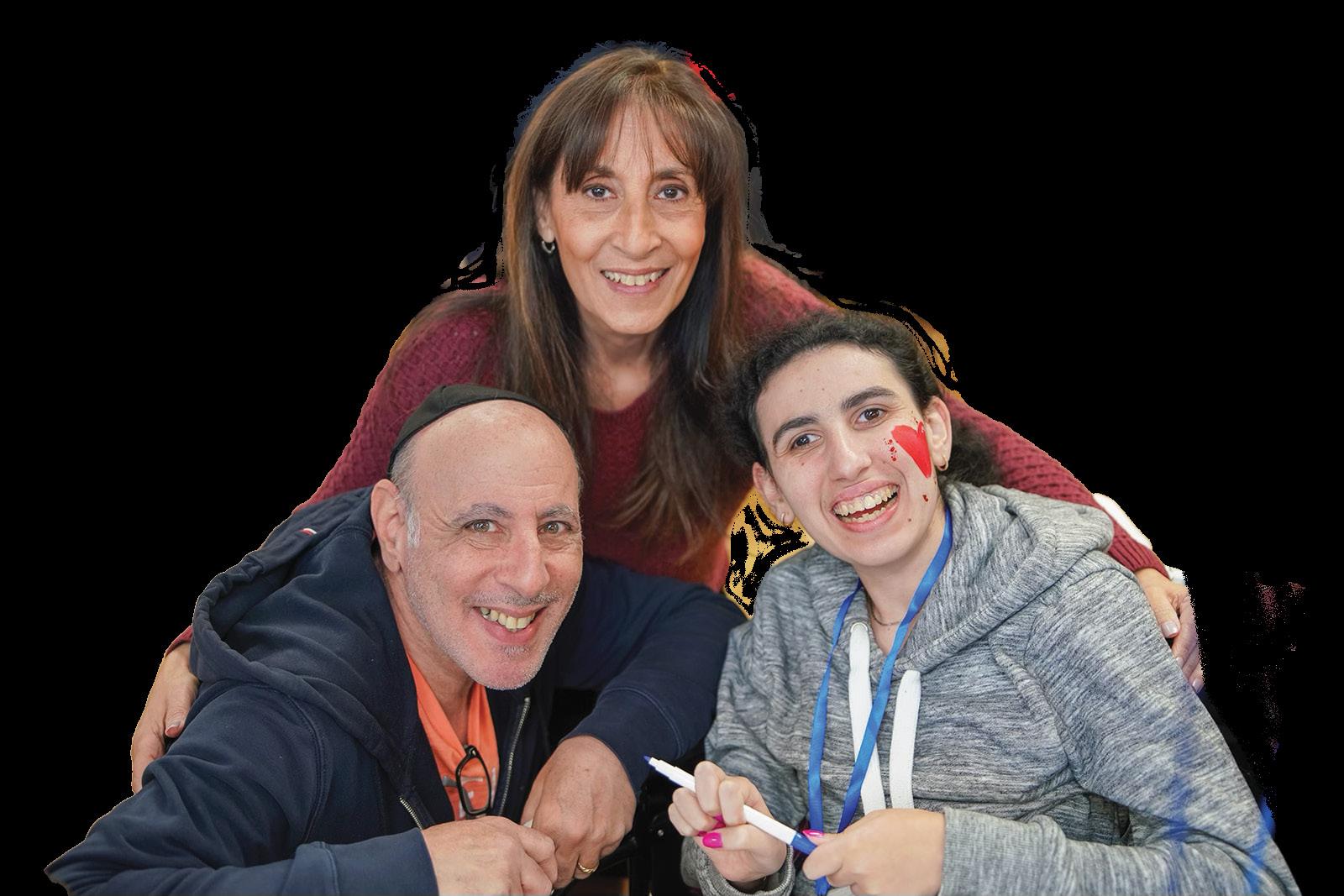

ing you have the energy to keep showing up. Yes, you are the absolute ideal person to take care of your child, but taking a break from caregiving, or craving adult time instead of watching the same kid video for the 100th time, has nothing at all to do with your capability.
Although many people feel they do not have the time or money to vacation or go out for dinner with their spouse, the truth is, you can’t afford not to. Taking a break or vacation is as important as charging your phone. Taking short breaks is like charging your phone for a half hour. Going out for dinner once a week, or even just for ice cream for an hour, is very helpful and important. No matter what, at some point, you will have to plug in your phone long enough for a full charge if you want it to work effectively for a long period of time. Similarly, you have to recharge yourself for a solid few days or a week so you can be the best spouse and parent. A vacation doesn’t need to be costly or long to have benefits. An affordable weekend getaway is far better than none at all. The key is to fully unplug from work and your regular routine.
• Health and energy. Rest lowers stress, protects your body, and restores emotional balance.
• Clarity. Distance gives perspective. Stepping back can reveal solutions that were hidden in the fog of exhaustion.
• Stronger relationships. Time alone with your spouse builds connection, joy, and trust. It reminds both of you that you are partners in life, not just co-managers of responsibilities.
We already know that breaks are good for us. The challenge is giving ourselves permission to take them. So, consider this your gentle reminder: rest is part of the job. It keeps your love sustainable. It gives your children the best version of you.
The question isn’t whether you need to recharge. The question is: how will you choose to do it today, this week, or this month?


Mount Sinai Brooklyn, formerly known as Kings Highway Hospital, has for years been part of the Mount Sinai Health System while continuing to serve as a true community hospital. The facility has expanded its services, upgraded its standards of care, and deepened its ties to the neighborhoods it serves. To learn more about these developments, we sat down with Shimmy Braun, Senior Director of Community Relations and Physician Alignment, who shared how Mount Sinai Brooklyn is working to combine worldclass resources with the warmth of a local hospital.
Q It has been four years since you joined Mount Sinai Brooklyn, and there have been many changes during that time. Can you share some of them with us?
A Sure. When I joined the Mount Sinai Health System and Mount Sinai Brooklyn,


I was given two areas of responsibility. I am responsible for recruiting physicians and surgeons to help expand the range of services offered to both in-patients and out-patients. My second area of responsibility is to serve as Senior Director of Community Relations. This responsibility includes representing Mount Sinai Brooklyn at assorted community events, and setting up Medical Education Presentations for the communities we serve. I also act as the liaison for the hospital to organizations such as Hatzalah, Sephardic Bikur Holim, Morris Franco Cancer Center (Medstar), Chaim Aruchim, Vaad Harefuah and RCCS, to name a few. I am in contact with many of the medical referral agencies, assisting with recommendations for specialists, and helping to expedite appointments for patients. Additionally, I work on some of the unique requests I receive on behalf of the religious community.

Q That sounds like a lot of coordination on your part. Does a major hospital such as Mount Sinai concern itself with community requests?
A Absolutely. The senior leadership has been extremely supportive of many of the requests that have been posed by community Rabbis and other community leaders.
Q Can you give me some examples?
A Of course. When I joined Mount Sinai Brooklyn, I discovered that although there was a Kosher certification on the food, it was dependent on leniencies (Kulot) that would apply for only sick patients (Holim) and not completely acceptable for employees and visitors. With the full support of the senior administration here at Mount Sinai Brooklyn, even with an increase in cost for the “upgraded” Kashrut certification, we are proud to tell everyone that as of December 1, 2022, the Kitchen and Cafeteria at Mount Sinai Brooklyn are under the hashgacha of Tarnopol Kashrus with the presence of Mashgiach Temidi (full-time kosher supervisor), and filters have been installed on the water supply. This certification can be relied upon by everyone and is not utilizing any of the leniencies used in the past.
Q What other accommodations have been made for our community?
A We gave our Bikur Cholim room a facelift and arranged with Yad Ephraim to keep it stocked with microwavable meals, salads, soups, drinks, and snacks. They also installed a warmer for individually wrapped Shabbos meals for those who require them.
In response to a request by one of the community Rabbis, we customized a private restroom to be designated as a “Sabbath Restroom,” with all manual fixtures. It is situ-
ated across from the Bikur Cholim room. We also have a Sabbath elevator for those who require it.
Q You mentioned that you recruit physicians and work on expanding the services offered at Mount Sinai Brooklyn. Please share with the community your accomplishments in that area.
A As part of the Mount Sinai Health System, we provide our patients access to subspecialty services, groundbreaking research, and clinical trials available across all our hospitals. During my interview for the position, I was informed of the goal we were working towards: “No matter which hospital in the Mount Sinai Health System a patient comes to, there should be no difference, clinically and aesthetically, from one to the next.”
With that in mind, Dr. Scott Lorin, President and Chief Operating Officer of Mount Sinai Brooklyn, laid out a plan of action. There was to be a concentration on raising the quality of care from that which previously existed for both in-patient and out-patient services and procedures. One of the first things accomplished was that all physicians are now Board Certified in their specialty, meeting the Mount Sinai Health System’s level of quality. Equipment at the Mount Sinai Brooklyn hospital was upgraded to the same level of quality as the rest of the system.
One of my first recruits was Betzalel “Bitz” Bree to serve as an Emergency Room Patient Navigator. As an active Hatzalah member, the ER was not a change of pace for Bitz. His responsibilities include assisting patients and their families while in the ER, as well as follow-through should the patient be admitted. In the three-and-a-half years that he’s been here, the patients and staff have nothing but praise for him for helping to manage the needs of

the patients, their families, and the ambulance personnel who brought them in.
My next recruit was Dr. Danny Sherwinter, an accomplished and respected surgeon in General Surgery, Colorectal Surgery, and Bariatric Surgery. We now added Chief of Surgery, Mount Sinai Brooklyn, to his title. He has taken over the Department of Surgery, and in the three years since he started, Mount Sinai Brooklyn is recognized as an excellent facility to consider for surgery. The hospital has two DaVinci Robotic Surgical Systems, which offer a minimally invasive surgical solution that accomplishes surgeries with less pain and shorter hospital stays.
The surgeries performed at Mount Sinai Brooklyn include:
• Bariatric Surgery
• Breast Surgery
• Colorectal Surgery
• ENT Surgery
• Advanced Gastroenterology Endoscopies and Surgeries
• Gynecology Surgeries
• Orthopedic Surgery and Joint Replacements
• Pain Management treatment and procedures
• Thoracic Surgery
• Urological and Kidney Surgery
• Vascular Surgery
• Two Interventional Radiology Suites
Q You mentioned earlier expanding services for out-patients as well. Can you elaborate on that?
A We have done extensive renovations to our professional building located at 3131 Kings Highway, and have added several medical specialties to offer to the community. Many of our physicians and surgeons treat patients both at The Mount Sinai Hospital in Manhattan and at Mount Sinai Brooklyn. Patients can see a “Manhattan Doctor” in Manhattan, or right here in Brooklyn. In essence, we’ve successfully brought Manhattan to Brooklyn.
We also have another site a few minutes away dedicated to our out-patient cardiology team. This state-of-theart facility is located at 1977 Flatbush Avenue (right off Flatlands Avenue). It offers nuclear and non-nuclear cardi-
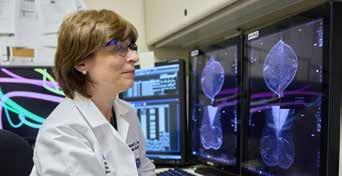
ac testing on site. There are diagnostic cardiologists on staff full time, as well as assorted subspecialty cardiologists from The Mount Sinai Hospital in Manhattan seeing patients on select days of the week. This facility has free parking in the rear of the building for our patients’ convenience.
Q The Mount Sinai Brooklyn Cancer Center at 3131 Kings Highway is an impressive addition to the hospital. Can you elaborate on that facility?
A Sure. This facility occupies the first floor at 3131 Kings Highway. It is an extension of the Mount Sinai Tisch Cancer Center, including The Tisch Cancer Institute, a National Cancer Institute-designated cancer center, our Cancer Centers of Excellence, and our Cancer Network. Our cancer specialists participate in active clinical trials and treat a variety of cancers. If a patient has been seen by a physician in a Mount Sinai Hospital in Manhattan, they can have their infusions performed locally at the Mount Sinai Brooklyn Cancer Center.
Adjacent to the Infusion Center at 3131 Kings Highway is our state-of-the-art Mammography Center, led by Dr. Frimmet Forman. The level of quality and sensitivity is excellent.
Q With all the expansion of services that you mentioned, are there any plans for adding a maternity department?
A That is an important question. While the size limitations of Mount Sinai Brooklyn won’t allow for a labor and delivery department to operate safely and effectively, we’ve done the next best thing. The Mount Sinai OB-GYN group, which performs baby deliveries at The Mount Sinai Hospital in Manhattan and is headed by Dr. Alan Adler, now has office hours two days a week to see patients at 3131 Kings Highway. This allows all the pre- and post-delivery visits to take place locally, while the actual deliveries happen in The Mount Sinai Hospital in Manhattan. The entire group rotates through here, so the patients get to meet all the doctors in the group. They are also seeing standard gynecology patients as well.
Q What else can you tell us about Mount Sinai Brooklyn?
A Mount Sinai Brooklyn is an accredited Stroke Center that is led by Dr. Steven Rudolph. Accreditation entails

having multidisciplinary teams to provide the appropriate therapy within the clinical guidelines for the acute treatment of stroke. The Mount Sinai Brooklyn Stroke Center has been recognized by the American Heart Association and American Stroke Association, which granted Mount Sinai Brooklyn the “Get With the Guidelines” Stroke GOLD PLUS with Honor Roll Elite award in 2021. In 2022, we achieved the Gold Seal of Approval from The Joint Commission, which awarded Mount Sinai Brooklyn advanced certification as a Primary Stroke Center.
In addition to all the specialists that are here, we are proud to offer the community a choice of two excellent primary care physicians in our PCP suite at 3131 Kings Highway. Drs. Diane Kantor and Milton Grunzweig bring years of experience in the field of primary care.
We are also very pleased that our Pain Management Practice, led by Dr. Gary Esses, has gained tremendous popularity by helping patients who struggle with chronic headaches, neck pain, back pain, and joint pain.
Q The public is always concerned regarding the nursing care in a hospital. What can you share with our readers about the nurses at Mount Sinai Brooklyn?
A I’m very proud to say that my response is based on what patients have told me and have written to me. I am so inspired by the praise given to our nurses by the patients and their families. We strive to keep our nurse-to-patient ratio within our guidelines, offering safe and expert care delivered with a smile. Mount Sinai Brooklyn proudly boasts an impressive rating within the Mount Sinai Health System, proportionately having the lowest hospital-acquired infection rate.
Ambulatory Infusion Center | Bariatric Surgery | Cancer
Cardiology | Emergency Medicine | Gastroenterology
Interventional Radiology | OBGYN | Orthopedics
Primary Care | Stroke Center | Surgery | Thoracic Urology | Vascular
Mount Sinai Brooklyn 3201 Kings Highway Brooklyn, NY 11234
Mount Sinai Fuster Heart at Mount Sinai Doctors-Flatbush 1977 Flatbush Avenue Brooklyn, NY 11234
Mount Sinai Doctors-Midwood 3131 Kings Highway Brooklyn, NY 11234
Q How would you summarize Mount Sinai Brooklyn?
A Mount Sinai Brooklyn offers the best of both worlds. We retain the warm feeling that the staff has both with patients and fellow staff members, usually experienced in a community-style hospital, with the resources of the Mount Sinai Health System fully available to our patients. If we feel that a patient will benefit in any way at one of Mount Sinai’s hospitals, we’ll internally transfer the patient to the facility that will offer the best expected outcome. As we are all part of the same system, all patient records are available across the entire network, residing in the Electronic Medical Records system that we all operate on. This allows for a seamless continuity of care.
Q Is there anything else you’d like to share?
A I truly hope that our services remain not needed, but should they be, we are here to help. Patients can contact us using the phone numbers below.
Primary Care Practice and Orthopedic Practice
718-758-7022
OB-GYN Group 212-731-3232
Surgery Department 718-677-0109
Flatbush Ave Cardiology Practice 718-758-7070
Mammography Department 718-951-2717
Infusion Center or Hematology/Oncology Physicians
718-758-7050
Urology Practice 212-844-8900
Stroke Department 718-677-2089
Chaplain, Rabbi Yaakov Hoenig 718-951-9323
Patient Representatives 718-951-3005

IN 2001, A SMALL FRIDAY-NIGHT MINYAN ON WEST 16TH STREET DREW SYRIANS, ISRAELIS, AND FRENCH JEWS TO PRAY IN ONE CROWDED ROOM. THAT SPARK HAS BECOME CONGREGATION MAGEN DAVID OF MANHATTAN (CMDM), NOW ANCHORED ON SULLIVAN STREET.
Today CMDM offers daily services, Torah study, holiday meals, and soon a Downtown Sephardic Student Center. More than a synagogue, it is a movement, a home for families and young professionals building their lives downtown.
This year marks a turning point with Rabbi Joey Faur’s appointment as CMDM’s new spiritual guide. At just 27, Rabbi Faur brings a rare blend of Torah mastery, youthful vigor, and genuine warmth. His journey, which includes immersive Torah study, academic and business pursuits, and defending Am Yisrael in the IDF uniform, resonates deeply with young adults seeking identity, purpose, and faith. At the same time, his erudition, maturity, and experience allow him to connect with community members, young and old alike.
Rabbi Faur’s impact was immediate. His lessons, rooted in Sephardic halacha and tradition, address contemporary challenges with both approachability and rigor.
Reflecting on CMDM’s atmosphere, Rabbi Faur explains: “Our community is, above all, a home for students, young professionals, couples, families, and visitors from near and far. The moment you step into Magen David’s Sullivan Street building, you are greeted with warmth and invited into tefillot, shared meals, and engaging Torah classes. That all of this exists outside the traditional community hub is nothing short of remarkable.”
RABBI SION SETTON AND THE DOWNTOWN SEPHARDIC STUDENT CENTER:
A NEW ERA OF LEADERSHIP AND LEARNING
Alongside Rabbi Joey Faur, Rabbi Sion Setton, a longtime friend, teacher, and beloved rabbinic presence at CMDM, is serving full-time as Principal of Yeshivah Prep High School. Over the next few years, he will lead an exciting initiative: the creation of the Downtown Sephardic Student Center, which will serve the spiritual and communal needs of hundreds of Sephardic college students and young professionals who live, dorm, or study in downtown New York.
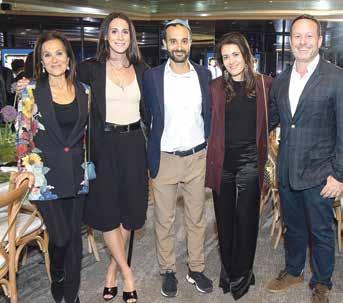

Located in Greenwich Village/SoHo, and serving students from NYU, Baruch, Pace, Cooper Union, Cardozo, and beyond, the Center is both a sanctuary and a home. The Downtown Sephardic Student Center, housed in CMDM’s newly renovated Sullivan Street facility, offers:
• Weekly Shabbat services and warm communal dinners.
• Daily minyanim and hot breakfast for students.
• Ongoing Torah classes and havrutot (study partnerships).
• Holiday programming and social events.
• Personal mentorship and halachic (Jewish law) guidance for young adults.
• Internship and job placement opportunities.
• Summer BBQs and get-togethers in Deal to strengthen community bonds.
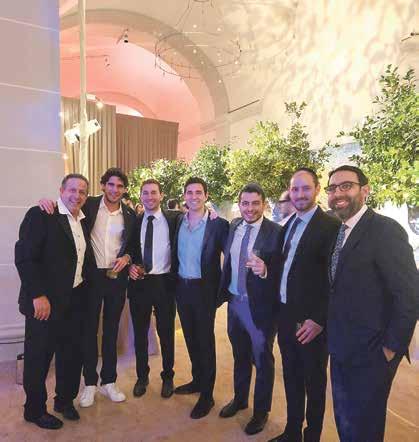

“Jewish students today are facing a world of intense pressure socially, academically, and spiritually,” says Rabbi Setton. “Our job is to make sure they know they are not alone. That there is a community that sees them, supports them, and helps them stay connected to who they are.”
Each weekday morning, as the city awakens, Hazzan Michael Gammal leads Shaharit melodically and efficiently, setting a grounded tone for the day. Soon after, Yossi Abraham hosts engaging Torah classes over coffee, fresh breakfast, and warm conversation, exploring everything from halachic insights to classical commentaries. These gatherings provide students and professionals with a meaningful spiritual anchor before they head off to work or school.
On Shabbat and Jewish holidays, the local community gathers for spirited prayers led by Hazzan Leor Alkadda. After services, everyone enjoys Kiddush and festive meals lovingly catered by Events Director Erica Rolo. Throughout Shabbat, meaningful Torah classes taught by Rabbi Faur, Rabbi Setton, and guest speakers, along with engaging

social programs, offer both spiritual nourishment and deep communal connection.
CMDM is more than a synagogue. It is a spiritual home, a vibrant social hub, and a center for Jewish life that serves all ages and stages. Our regular programming includes:
• Lavish monthly Friday-night dinners for young professionals.
• Purim celebrations that have become downtown’s most anticipated parties.
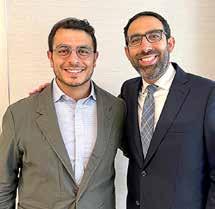
• Rooftop gatherings, guest speakers, exclusive film screenings, panel discussions, and more.
Events Director and chef extraordinaire Erica Rolo ensures that every gathering is thoughtfully prepared and beautifully executed. The result is a warm, joyful, and welcoming environment that fosters lasting relationships. In fact, over forty couples have met and married through connections made at CMDM, a testament to the depth and vitality of this community.
Our newly renovated event space and modern kitchen on Sullivan Street, just steps from SoHo and Washington Square, now also hosts life cycle events, including:
• Brit milot
• Bar and Bat Mitzvahs
• Sheba berachot
• Engagement parties and memorials
In an era when many young Jews are disconnecting from faith and tradition following high school, Magen David of Manhattan offers something powerful: a model for staying rooted without standing still. It is a place where young people do not have to choose between downtown life and Sephardic values. It is a synagogue where you can attend a morning minyan, learn Torah with your rabbi over coffee, celebrate your engagement, and find your community, all under one roof.
It is where kids from Brooklyn or Deal who dorm in the city feel safe and grounded. It is where young professionals meet their future spouses. It is where downtown families bring their children for their first aliyah to the Torah. It is not just a synagogue. It is home.
As Rabbi Elie Abadie once said in a dedication: “May this synagogue be a sanctuary, where prayers of all people will be heard and answered. Not only a place of worship but a place to touch eternity.” Magen David of Manhattan is that place. And the time to invest in it is now.
Congregation Magen David of Manhattan is located at 177 Sullivan St. NYC. To host your simcha, learn more about our growing programs, or get the minyan schedule, visit www.MagenDavidNY.org. For direct inquiries, contact Erica Rolo at 212-673-0333 or email info@magendavidny.org.





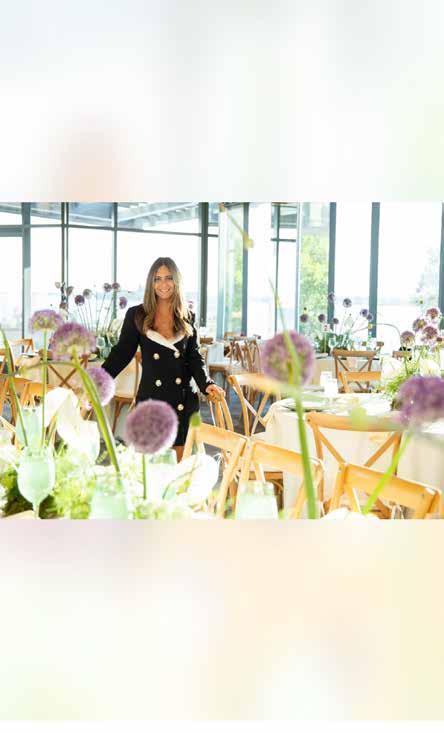

This summer at SBH was packed with moments that brought our community together in the best ways. We kicked things off with our favorite Saturday night of the year, Midnight Festival, where over 3,000 young adults gathered to play games and scream on rides with their friends. Soon after came Jaclyn’s Lemonade Stand, our sweetest event of the summer in memory of Jaclyn Ashear A”H. Ten families hosted stands that included snacks and activities like a bouncy house, face painting, pony rides, even a train ride, and of course, lemonade. That same day, our youth and young adults joined forces at Hoops4Hesed, competing in volleyball, basketball, and soccer tournaments.
Parents had some opportunities to check in too, from SEARCH’s free screenings for children ages 0 to 4, to Recipe for Success, where families learned practical strategies for the upcoming school year. Shortly after, hundreds of women attended our Medical Day of Health at DSN Beach Club, which focused on bone health.
Over 400 parents and grandparents showed up for our Courage to Heal event, where our expert panelists discussed body safety, boundaries, and prevention for

children. Our Fertility Division hosted one of our most successful events of the summer with Together We Grow, an evening of speakers, connection, and a beautiful auction. Our speakers shared their own fertility journeys, bringing awareness and attention to such an important topic.
We can’t forget about our Young Professionals, who impressed this summer with their Stoop Talks in collaboration with The Center, where over 400 young adults gath-
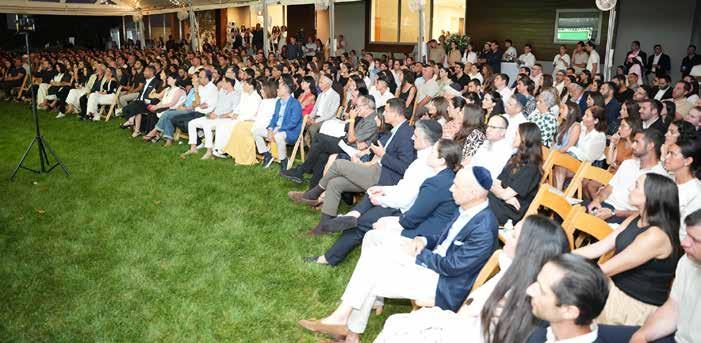




ered on a Friday to hear from community leaders in real estate, including Jeff Sutton, and in hospitality.
Our seniors also had a jam where they danced at the annual Senior Nobeh and sang as loud as they could with Stevie Chera at Young at Heart. Some even ran in our Diane Azrak A”H Team SBH 5K. Our Candy Land–themed marathon was a complete sugar rush, with community members



running, strolling, skipping, and of course, crawling. We slowed things down with a day of golf at our 12th Annual Golf Outing, where we honored Michael G. Hudgens and Jason M. Goldberg with the Partners in Kindness Award.
Back again with our youth, they planned an incredible program during the Nine Days. They packed their nights with hallah baking, hesed fairs, meal packing, hanging out with the Special Children’s Center, and an auction. A few weeks later, we held our Charles J. Anteby Youth Awards, where we honored our past presidents and welcomed our new youth presidents and vice presidents of Brooklyn and Jersey. We also celebrated our captains at Captain


Appreciation Night, where we recognized volunteers who give so much to SBH.
From June to August, summer at SBH was filled with energy, excitement, inspiration, and education, just because it’s summer doesn’t mean we can’t learn new things! It reminded us once again that when our community comes together, we create something truly special.



THE AVERAGE COST OF TUITION IN OUR COMMUNITY IS $30,000 PER CHILD, PER YEAR. FOR A FAMILY WITH FIVE CHILDREN, THAT’S A BILL OF $150,000. HOW CAN FAMILIES LIVE LIKE THIS? THE BURDEN IS ENORMOUS, AFFECTING NEARLY EVERY HOUSEHOLD. BUT OUR COMMUNITY HAS PROVEN THAT WHEN WE FACE A CHALLENGE, WE COME TOGETHER. WE’VE ALWAYS SUPPORTED EACH OTHER, WHETHER IT’S FAMILIES, BUSINESSES, OR HEALTH NEEDS. TUITION SHOULD BE NO DIFFERENT. THIS IS OUR MOMENT TO WORK SIDE BY SIDE AND SOLVE THIS CHALLENGE THROUGH UNITY, CREATIVITY, AND COMMITMENT.
UCEF has spent the last 8 years working with community companies and individuals to generate funds for tuition relief. To date, UCEF distributed nearly $6 million directly to families in all 14 Brooklyn community schools.
The system is in place. Parents, schools, and businesses are connected. The structure works. Now we need more

people to use and maximize these programs so we can generate millions more for our community families.
UCEF connects your company to vetted vendors. You talk to them like any new partner, review pricing, services, and quality. If it works for your business, the vendor pays UCEF a royalty that goes directly to tuition relief.
One example: “A company initially told us not to bother, they thought they already had the best rates. After a review, UCEF was able to save them $150,000, and now their business generates royalties for UCEF, connecting their business to Beracha.” If it doesn’t make sense, nothing changes. No risk, only potential benefit.


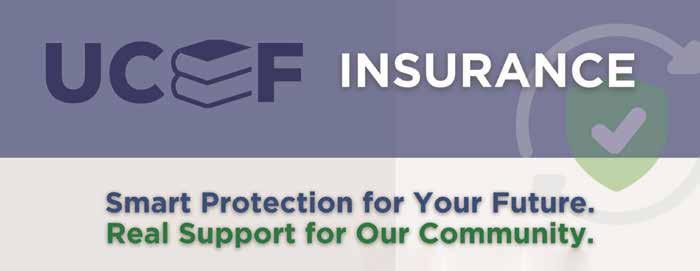
UCEF partners with top professionals across all types of insurance, Business, Home, Life, Group Health, Estate Planning, and more. Connect with one of the UCEF partners to see if they can get you better rates or better coverage. If they can, make the change, otherwise stick with what you have.
The Eli Cohen Insurance Agency has been a flagship partnership for UCEF. They have been successful in helping save our community business owners hundreds of thousands of dollars and have been able to contribute to the UCEF fund. The Eli Cohen Insurance Agency specializes in:
• Property Insurance for Real Estate including Residential, Commercial, Warehouse/Industrial
• Product Liability & Ocean Marine for wholesale companies
• Business Insurance and Workers Comp for retail stores, restaurants, and more
• Homeowners/Landlord insurance for homes in NY and NJ

Everyday purchases can generate tuition dollars. Shopping locally, for example buying groceries at Jerusalem Glatt, clothing at 2020, a treat from Urban Pops, or dinner at Subnational, generates rewards to your own tuition bill. Rewards can be 2–5x higher than most credit cards. Keep your
cards, but when rewards are better, use the UCEF Tab card.
The card is also perfect for kids. Instead of cash allowance, load the UCEF card. You control the funds, guide their shopping, and every purchase racks up tuition credits that come directly off your bill.
UCEF’s program is inclusive and fair. Each year, UCEF has sent schools a list of approved families and the perchild amount, then issues a lump-sum check. Schools apply the funds directly to each parent’s tuition bills. Families see immediate savings.
UCEF is positioned to lead with the upcoming tax credit bill. Starting January 1, 2027, every taxpayer can send a $1700 donation to UCEF which will generate a dollar-fordollar tax credit. It doesn’t cost you anything, and since UCEF has running programs every donation dollar goes directly to tuition relief.
UCEF also has 3–4 major initiatives in development that can generate millions more. The systems are ready. What they need now is people to get involved and help put them into action.
This isn’t about a few leaders doing all the work. Every person has a role. Work with a vendor, review your insurance, shop with the debit card, or share your skills and connections. Let’s stop saying, “There’s nothing we can do,” and start saying, “I’m ready to do something.” Together we can turn this challenge into our greatest accomplishment. The more people that participate, the more successful we can be.
If you’re ready to take the next step, reach out to a UCEF board member or contact our Executive Director, Sammy Esses, at 917-647-9276 or email him at sammy@ucef.com. You can call, text, or email him anytime.
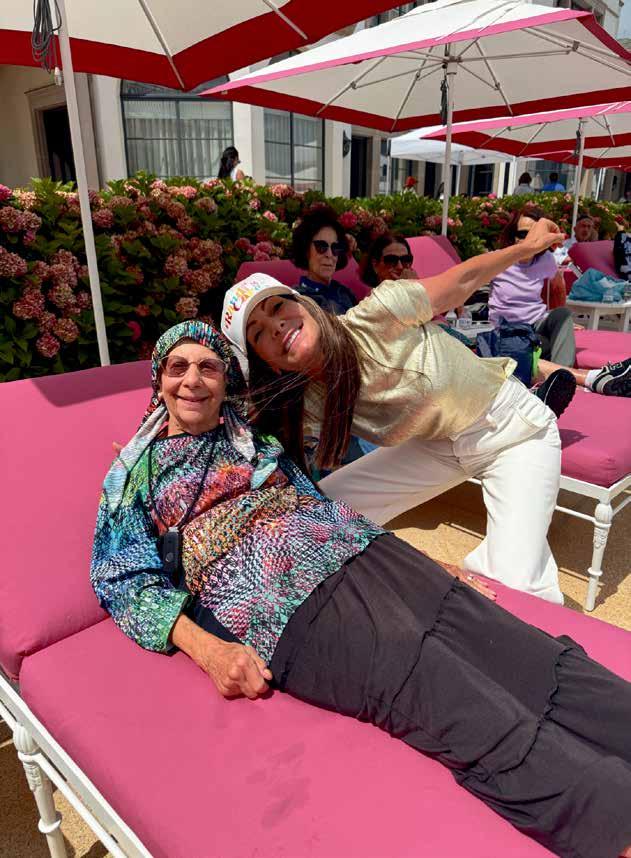
At Randi’s Care, our mission has always been simple: to give every family peace of mind knowing their loved ones are cared for with dignity and compassion. Thanks to the incredible support of our community, we’re now able to reach more families than ever.
No matter your background or circumstance, we’re here to make trusted care accessible, supportive, and personal. Because every senior deserves to feel at home in their own life and every family deserves a helping hand.


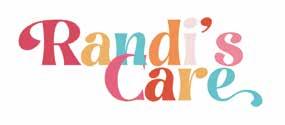

I HAD BEEN TO ISTANBUL ABOUT 10 YEARS AGO WHEN MY HUSBAND AND I DID A TOUR OF TURKEY. DURING THAT TIME, I MET WITH RABBI IZAK PERES AND WE BECAME FRIENDS. I LOVED TOURING TURKEY AND VISITING THE SEAT OF MODERN TURKEY, SINCE IT BECAME A SOVEREIGN NATION AFTER THE FALL OF THE OTTOMAN EMPIRE. I MET WITH RABBI IZAK PERES AGAIN DURING THIS VISIT, BUT IT WAS UNDER DIFFERENT CIRCUMSTANCES. HE VISITED ME IN THE HOSPITAL AND MADE SURE I HAD FOOD FOR SHABBAT.
Istanbul has become a popular destination for highquality plastic surgery and I was no exception. The price and the first-class treatment made it an amazing experience. If you ever want to go for plastic surgery, this is the place to go and I can definitely find you a connection. In fact, my connection was someone from the community who hooked me up with her sister, Miryam Sulam. She was my go-between, coordinating with the doctor and the hospital and making sure that I was taken care of when I came.
Rabbi Peres was also there. He got his semicha (Rabbinic ordination) from Shehebar Sephardic Center and Rabbi Sam Kassin. In Istanbul, Rabbi Peres is not only a congregation rabbi, he is also a dayan (rabbinical judge), a teacher in the Jewish day school, and a shochet (kosher ritual slaughterer). He told me he was going the next day to Bulgaria to slaughter meat to send to Greece, since they are not allowed to slaughter in Greece. He is a busy guy.
During my visit, Miryam also took the time to take me
around a little bit. The first day after my pre-op exam was finished, we went to Neve Shalom Synagogue in Galata, which is a neighborhood on the European side of Istanbul. Istanbul has a European side and an Asian side.
As a little background, Jews came to what was then the Ottoman Empire in 1492 when Sultan Bayezid II invited them after the expulsion from Spain by Queen Isabella and King Ferdinand. The sultan sent ships to bring Jews to the Ottoman Empire. Jewish communities all over the Ottoman Empire took root from Istanbul to Antakya for over 530 years.
A century after the creation of the nation of Turkey, there are still several Jewish communities, primarily in Izmir and Istanbul. The communities are 96 percent Sephardic and a few Ashkenazim. The presence of Jews in Eastern Turkey—in places like Iskenderun, Gazi Anteb, Kilis, Antakya, and cities that border Syria—has decreased to minuscule numbers.
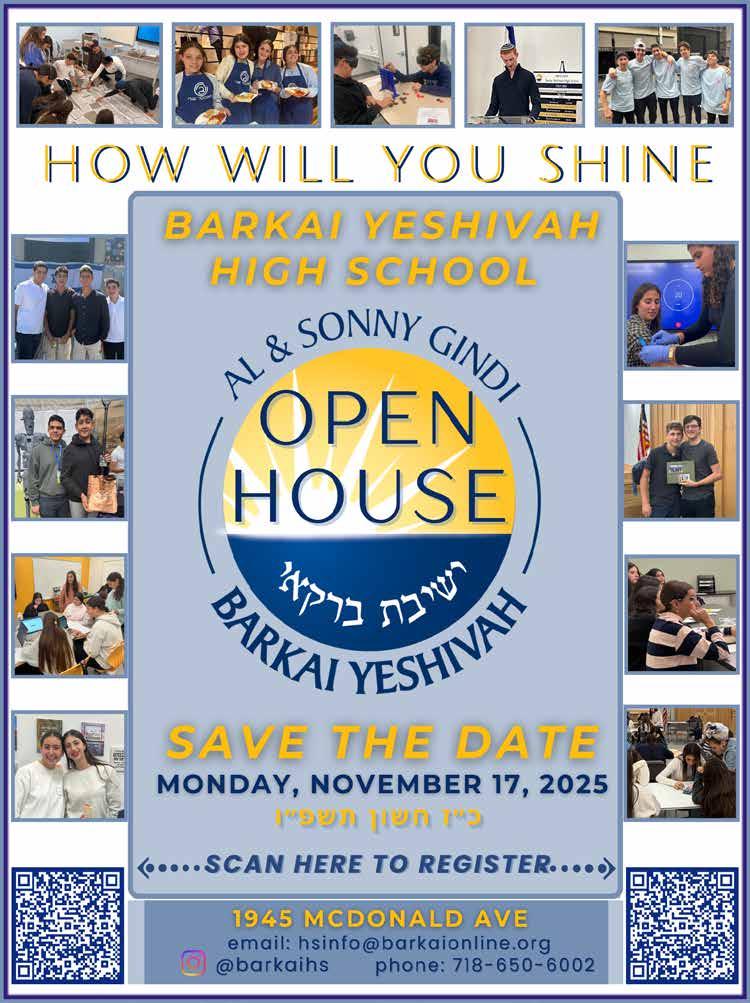




The Neve Shalom Synagogue is located near the Galata Tower, a famous site. People were lined up for hours to go to the top of the tower. Neve Shalom is not only Istanbul’s central Sephardic synagogue and the seat of the Istanbul Chief Rabbinate, it is also the largest house of worship of the Jewish community in Turkey. Weddings, funerals, and bar mitzvahs, as well as the inauguration of the Chief Rabbi, are regularly held there. It is the only synagogue on the Golden Horn that has an intact mikveh.
There are important traditions I learned about the Jews of Turkey. Their lahamagene is the size of a personal pan pizza. Each year, they have a day dedicated to Limmud. Limmud was originally a conference in the United Kingdom for Jewish educators. It evolved over the years into a community gathering of Jewish learning and has grown into a large international organization based in over 40 countries and almost 100 communities worldwide. In Turkey, there are over 1,000 participants each year.
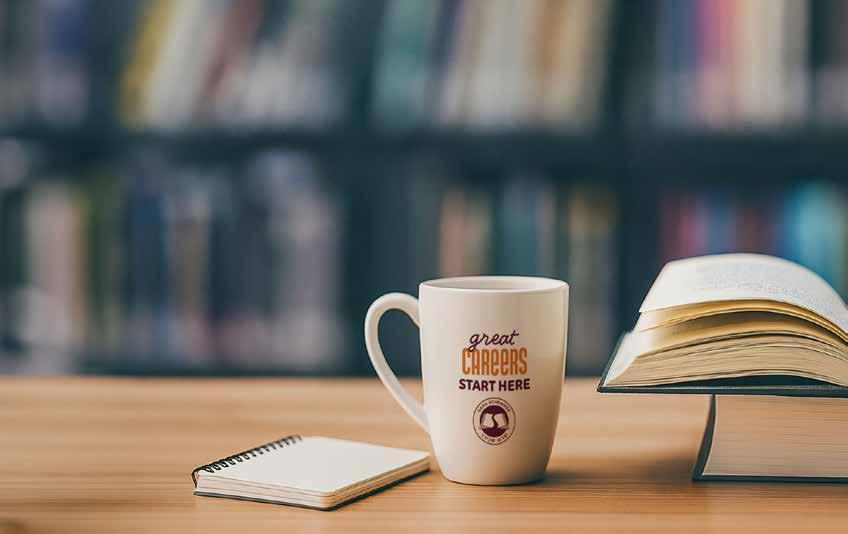
Choosing a degree starts with asking the right questions:
How can I apply my high school credits?
Can I transfer seminary/yeshiva credits at no cost?
Am I eligible for financial aid?
What if I’m still unsure about my career choice?
At Sara Schenirer, we believe that every student deserves clarity before making one of life’s biggest decisions. Our team breaks down the process step-by-step, so that you can move forward with confidence.
When you join an Online Information Session, you’ll hear from advisors, alumni, and professionals who will guide you, answer your questions live, and set you on the path toward the right degree.
Choose your session today at: sarasch.com/ open-house or scan code to learn more.



During the second week of May each year, a concert is held in the Great Edirne Synagogue to celebrate the Week of Foundations. The synagogue in Edirne was rebuilt and reopened in 2015.
While many Americans hold baby showers for a pregnant mother, it is seen as bad luck in American Jewish families. Not so in Istanbul. Fashadura is a time-honored ceremony held in the fifth or seventh month of pregnancy, always on a Monday or Thursday, the day the Torah is read. Family and friends gather and a garment of cotton or linen is sewn for the unborn child to be worn when born, and it is believed to give the child long life. The first cutting is by someone who has no children.
Before leaving New York, many people asked how I felt going to Turkey when, due to the Gaza War, the nation had broken off relations with Israel. I am a staunch Zionist and supporter of Israel. However, I did not see any reason not to go to Turkey for this purpose, especially since I knew Jewish people and a prominent rabbi. Turkey is not a place to advertise you are Jewish. Miryam is encouraging her two children to find jobs outside Turkey. The community is decreasing in numbers. Thousands have gone to Israel or gotten Portuguese or Spanish citizenships.
Neve Shalom means “Oasis of Peace,” but the peace came to a sudden end in 1986 and 2003 when the house of prayer became a target of vicious terrorist attacks, both on Shabbat.
The Jewish Museum of Turkey is also in Neve Shalom. The inside of the synagogue is truly magnificent, and you can see how the community once thrived here. The museum shows the rich 700-year history of Jews in Turkey. Part of the museum shows the history of the Jews in Anatolia dating back to the 4th century BCE and continues with the arrival of Sephardic Jews expelled from Spain in 1492 and later from Portugal.
I spent two days in the hospital for the procedure and then was moved to the Sheraton to recuperate. I noticed the hotel had tight security, with every vehicle being scanned. Packages, bags, and purses had to go through a scanner and people through a metal detector.
A few days after my procedure, I returned to the hospital for a post-op check-up and clearance to fly home. After I was cleared by the doctor, I felt like I needed to get some fresh air and the weather was perfect for a little walk.
So before I came back to New York, I suggested to Miryam that I wanted to visit the Yanbol Synagogue in Balat. I had read that it had been renovated and it was one of the four surviving ancient synagogues in Balat, a district once densely populated by Jews. Miryam called the synagogue and arranged for us to visit. We would see the synagogue and get lunch.
The two-year renovation of Yanbol was financed by the German Consulate. The sanctuary was just breathtaking as you will see from the photos in this article. It is a fully functioning synagogue with regular services. There is a small museum there as well, featuring rimonim (Torah finials), Torah crowns, and other religious articles discovered in a hidden storeroom. All of the artifacts were restored and turned into an exhibition in cooperation with the Quincentennial Foundation Museum of Turkish Jews. It contains elements dating from Byzantine times in its courtyard, and its ceiling is decorated with oil paintings of nature.
The sanctuary hall features a mixed stone and wood structure. Special care was taken to conserve and restore the synagogue’s original artwork, decorative elements, and wall paintings.
Just a few feet from the Yanbol Synagogue was Ahrida Synagogue. The caretaker walked us down the street and opened its doors, taking my breath away. It was built



by Romaniotes (Greek Jews), dating back to the 1430s, from the city of Ohrid in what was then the Ottoman Empire and is now North Macedonia. Ahrida Synagogue is known for its boat-shaped tebah (reader’s platform). Ahrida Synagogue is also the only synagogue in Istanbul at which Sabbatai Zevi, founder of the Jewish Sabbatean movement, prayed.
Despite the decreasing numbers, Istanbul and its suburbs still have a community large enough to support at least 19 synagogues, youth and family clubs, social support, and a 500-student Jewish day school. The curriculum is taught in Turkish, Hebrew, and English.
There is also a Talmud Torah, clubs, and ways for families and youth to be together and make friends on both the Asian and European side of Istanbul. Young adults have many opportunities to socialize, meet, and marry within the community. There are also summer synagogues that open as people leave the city for the beach communities.
The community has a full agenda of social services: pocket money, scholarships for higher education, ambulance services, caregivers, counseling, a weekly and monthly Ladino newspaper, senior citizen housing, and programs.

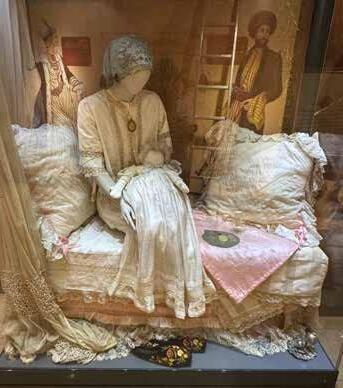
dress of a Turkish Jewish mother, shown in a museum display.
Would I come back to Istanbul in the future? Probably, but I would need to consider the current state of affairs. Turkey is one of the few nations with a primarily Muslim population I felt safe in.
Sarina Roffé, a genealogist and historian, is the author of Branching Out from Sepharad (Sephardic Heritage Project, 2017). She is currently researching her next book, Syrian Jewish Paths to Freedom. Sarina holds a BA in Journalism, an MA in Jewish Studies, and an MBA.


LINDA ARGALGI SADACKA
THE TRAGIC MURDER OF CHARLIE KIRK HAS GENERATED SORROW ACROSS AMERICA. WHAT HAS FOLLOWED IS A DISGRACE: A TORRENT OF SLANDEROUS ACCUSATIONS TYING ISRAEL TO HIS DEATH. IN ONLY A FEW DAYS, MORE THAN TEN THOUSAND SOCIAL MEDIA POSTS HAVE CLAIMED WITHOUT EVIDENCE THAT ISRAEL ORCHESTRATED THE KILLING. THESE ACCUSATIONS ARE NOT ONLY FALSE, THEY ARE DANGEROUS, AND THEY MUST BE EXPOSED FOR WHAT THEY ARE: MODERN BLOOD LIBELS.
The first question any rational observer should ask is simple. Where is the evidence? There is none. Not one law enforcement agency, not one credible journalist, not one piece of verifiable information has implicated Israel. The accusers began with their conclusion that Israel was guilty and then tried to construct a conspiracy around it. That is the inversion of truth. In a court of law, such claims would be thrown out before arguments even began.
The second question is, what possible motive would Israel have? Charlie Kirk was not an enemy of the Jewish
state. He was a friend. He praised Chabad. He honored Shabbat (Sabbath). He recognized the role of Jewish tradition in sustaining Western civilization. For Israel to kill Kirk would mean striking at an ally. No rational democracy murders its allies. The very suggestion defies logic.
The third question is why Israel is being singled out. The answer lies in history. For centuries, antisemites have blamed Jews for every calamity. When the plague swept Europe, they said the Jews had caused it. When economies collapsed, they said the Jews were behind it. After the September 11 attacks the same lie spread, that Israel orchestrated it. Now



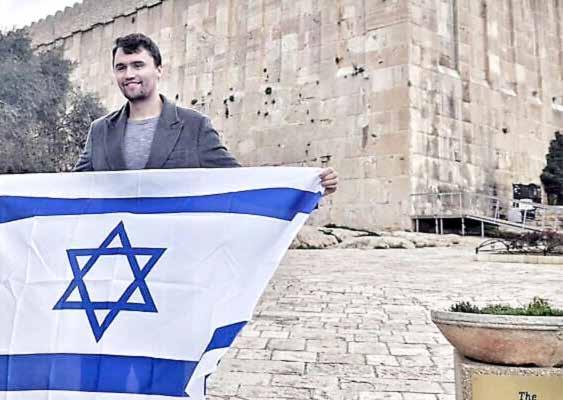

Kirk’s murder has become the newest excuse for the oldest hatred. These accusations are not based on fact. They are rooted in prejudice and scapegoating.
A fourth point is practical. Every moment wasted on this nonsense is a moment stolen from the pursuit of justice. Conspiracy theories do not honor Kirk’s life. They dishonor it. They distract from the real perpetrators. They delay accountability. They embolden the very forces of hate Kirk opposed. Instead of mourning a man of conviction and seeking truth, they weaponize his death against the one democracy in the Middle East.
Finally, there is the moral dimension. To blame Israel for Charlie Kirk’s death is not merely wrong. It is obscene. It is the twenty-first century’s version of the blood libel, the most pernicious of antisemitic lies. These conspiracies are not aimed at solving a crime but at scapegoating a people. That is why they must be rejected with clarity, with reason, and with moral courage.
Charlie Kirk deserves the truth. His family deserves justice. Israel deserves not to be defamed with baseless slanders. Let us be clear: Israel did not kill Charlie Kirk. To claim otherwise is a lie, a blood libel for our time, and history will judge those who spread it accordingly.
Linda Argalgi Sadacka is a writer, political activist, and community leader. She is the CEO of the New York Jewish Council and the founder of Chasdei David, a 501(c)(3) charity. Her advocacy, sparked by the tragic murder of a close friend by Hamas, has made her a leading voice for the Jewish community in America and abroad. She was honored as a Woman of Distinction in 2022 by Senator Simcha Felder for her leadership and activism. Linda is also the host of The Silent Revolution podcast, where she shares weekly classes blending Torah, prayer, and real-world reflection, making ancient wisdom urgent and relevant for our times.
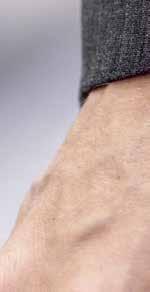

































LONG BEFORE THE MODERN SELF-HELP GENRE, RABBIS OF 19TH-CENTURY EUROPE FORGED A SYSTEMATIC PATH OF CHARACTER DEVELOPMENT. ROOTED IN CLASSIC JEWISH ETHICAL TEXTS BUT ATTUNED TO THE CHALLENGES OF THE MODERN ERA, MUSSAR (JEWISH ETHICS) EMPHASIZED SELF-REFLECTION, WORLDLY WISDOM AND ETHICAL ACTION.
The movement spread rapidly across the Jewish world and its teachings remain as relevant today as ever—pointing us toward practical ways of living with mindfulness and integrity. Here are a few gems that speak across boundaries of culture and time.
“At first, I would get angry at the world but not at myself. Later, I would get angry also at myself. Finally, I got angry at myself alone.” — Rabbi Yisrael Salanter
Rabbi Yisrael Salanter (1809–1883), the founder of the Mussar movement, was a brilliant Talmudic scholar who recognized the urgent need for a renewed emphasis on character refinement. His journey began with a bold self-assessment—he saw that it is far easier to rail against the faults of the world than to confront our own shortcomings. His insight points to a fundamental truth of growth: meaningful change begins with personal responsibility. We cannot hope to fix what is broken outside if we ignore what is broken within.
“Someone else’s material needs are my spiritual responsibility.” — Rabbi Yisrael Salanter
We often divide life into “spiritual” versus “material,” as if feeding the hungry is less holy than meditating or studying. Rabbi Salanter turns that dichotomy on its head. True spirituality is lived in acts of generosity and kindness. Meeting another’s physical needs is itself a sacred duty.
“A person who has mastered peace of mind has gained everything.” — Rabbi Simcha Zissel Ziv of Kelm Rabbi Simcha Zissel Ziv (1824–1898), known as the Alter (“Elder”) of Kelm, was one of the foremost disciples of Rabbi Salanter. His Mussar school was famous for its emphasis on clarity of mind and meticulous order, even in the smallest details. To him, a student’s messy wardrobe was no trivial matter—it signaled a lack of inner tranquility, the very foundation of self-mastery.




When our minds are turbulent, we struggle against ourselves. But peace of mind calms the waves, allowing us to reflect, choose, and grow. In today’s overstimulated world, cultivating stillness may be the most radical practice of all.
“If you see that someone came to the station after the train he wanted had already left, do not say that the man was late and missed his train, but that he came early for the next train. For everything is in the hands of Heaven.” —
Rabbi Yosef Yozel Hurwitz of Novardok
Rabbi Yosef Yozel Hurwitz (1847–1919), known as the Alter of Novardok, was a younger disciple of Rabbi Salanter who charted his own radical course in Mussar. His school emphasized uncompromising self-criticism and absolute trust in the Creator. He rejected society’s obsession with success, status, and control—warning that such pursuits distort our values.
Life is not just about missing or catching trains; it is about recognizing that even mundane events are part of a larger design. Instead of despairing when our plans falter, we can step back and reframe: perhaps we are simply arriving early for what comes next.
“Some people allow their minds to be a free hotel open to all. Anyone who wishes can dump his trash there.” —
Rabbi Yosef Yozel Hurwitz
Decades before the digital deluge, Rabbi Hurwitz warned of the danger of mental clutter. Being open to ideas is vital, but discernment is just as important. Wisdom requires filtering—carefully curating what we allow into our mental and emotional space.
“A person should give up his whole future for today, so that he will not waste all his todays for one tomorrow.” —
Rabbi Yosef Yozel Hurwitz
How often do we sacrifice today’s opportunities for an imagined tomorrow that may never come? Rabbi Hurwitz reminds us of a simple but radical truth: life is lived only in the present. Planning is important but not at the cost of neglecting today’s irreplaceable moments.
“When you have a true ambition for something, you will not give up hope. Giving up hope is a sign that you are lacking ambition to achieve that goal.” — Rabbi Eliyahu Eliezer Dessler
Rabbi Eliyahu Eliezer Dessler (1892–1953), a disciple of the Kelm school, brought its Mussar teachings first to England and later to Israel, where his work Michtav Me’Eliyahu (Strive for Truth in English) became a classic of modern Jewish thought.
For Rabbi Dessler, hope is not just a feeling but a barometer of commitment. If we truly yearn for a goal, we will keep hope alive even in difficulty. Losing hope, then, is not only discouragement—it is a sign that perhaps the goal no longer stirs our deepest will. Hope tells us what we truly want.
“To change a person’s nature—to reverse their character traits—requires a miracle.” — Rabbi Yerucham Levovitz of Mir Rabbi Yerucham Levovitz (1875–1936), a leading student of the Kelm school and spiritual guide of the Mir Yeshiva, was renowned for his eloquent sermons and penetrating insight into the human soul. His famous teaching about change highlights one of Mussar’s central truths: transformation is no small task. Rather than minimize the challenge, Rabbi Levovitz actually magnifies it—calling real character change nothing less than miraculous. But the point is not to discourage us. On the contrary, he means to inspire awe at our capacity for growth. Each small victory over anger, pride, or laziness is nothing less than a wonder—evidence that human beings are capable of transcending themselves.
Taken together, these Mussar teachings offer a powerful framework for self-development. They call us to begin within oneself, to merge the spiritual and the practical, to guard our inner lives, to live in the present, to persist with hope, and to marvel at the miracle of growth. In an age hungry for wisdom, the voices of these masters remind us that the tools for transformation are already in our hands.
Rabbi Dovid Campbell lives in Ramat Beit Shemesh with his wife and children. He is the creator of NatureofTorah.com, a project exploring the Torah’s role in revealing the moral beauty of the natural world.
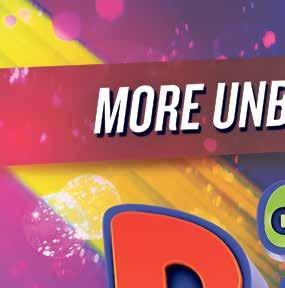






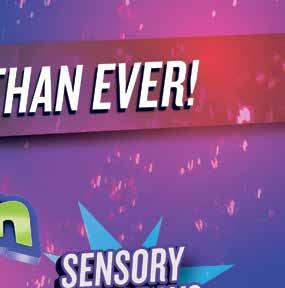





THROUGH THE EYES OF THE WOMAN WHO KNEW HIM BEST, HIS WIFE LILLIAN SETTON
WHO COULD TRULY KNOW THE ESSENCE OF A MAN? THE ANSWER IS HIS WIFE! MY HUSBAND JACK AND I WERE MARRIED FOR 64 YEARS BEFORE HE PASSED AWAY AT THE AGE OF 101.
Even before our marriage, I saw his essence, his good heart, good nature, loving kindness, devotion, as well as his ever-welcoming smile. Indeed, those virtues remained steady throughout those years. Not only did he share them with me and our children, he also shared them with people he met.
In 1948, Jack and his family fled Syria due to the Arab uprising against the Jews. They settled in Jamaica, West Indies. There he

and his brother Isaac became business partners and were very successful.
Before our marriage, he asked me if I would live in Jamaica. I declined, explaining that I wanted to raise our children and not have to ship them off to Brooklyn in order to procure a yeshiva education. He understood, and we agreed to stay in Jamaica for one year so as to allow him to close his business. Actually, we stayed there for 3 years. However, all of my children were
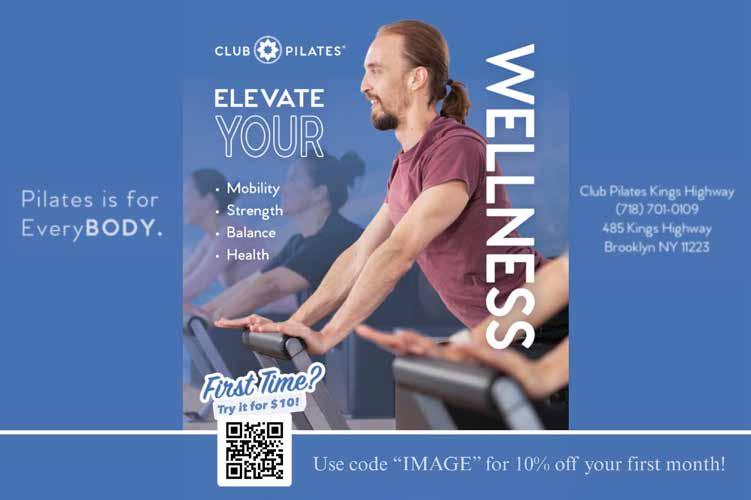





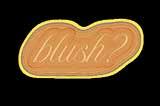
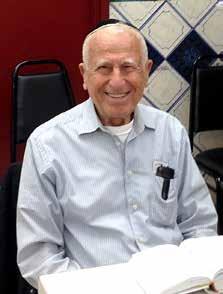

born in the USA. Upon our arrival in New York, he found it very difficult, as he now went from being an employer to becoming an employee.
There is so much that I loved and admired about my husband. However, there was one particular time that my admiration for him became overwhelming. I would like to share it with you: He held various managerial positions in retail stores. He was working on Shabbat (the Sabbath). He was not happy about it, nor was I. We had many conversations about it, as I kept encouraging him to stop working on Shabbat.
Then one day he came home and announced: “I informed my bosses that, ‘I will no longer work on Shabbat (the Sabbath) as well as the Jewish holidays. If it is not agreeable to you, then I quit.’” When he did that, he did not have any job lined up. His bosses refused to let him go, and so they agreed on his terms. I cannot express the joy I felt thanking Hashem for this gift and how proud I was of my husband! He had complete bitachon (trust) in Hashem. Soon after, he became the much-loved mesader (prayer organizer) in the Sitt shul.
The last job he took was as a manager working for David Nissim at Gizelle Ladies Wear on the Lower East Side. He was there for many years before he retired at the age of 92. His relationship with David was like father and son. David loved him, and he loved David. The workers loved him, the customers loved him, as he was known for his warm smile.
Besides his being a wonderful loving husband, he was a terrific loving father. When our children were asleep at night, he always placed a candy bar or gum or some other treat on their windowsills. The children would awake with such glee as they retrieved the items.


I am so thankful to Hashem for allowing me to be at my husband’s bedside towards the end, where I was able to thank him for 64 wonderful years.
My dear Jack, I know that you are praying for all of us, and I look forward to our reuniting again with the coming of Mashiach.


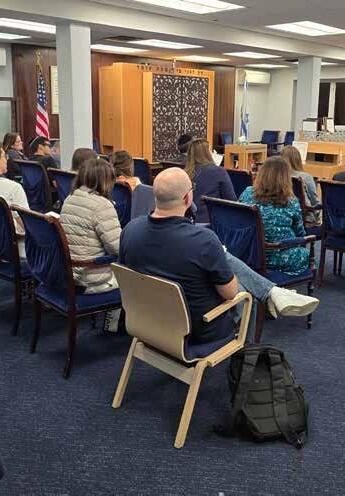

THINK ABOUT THIS. YOU’RE BEING GIVEN AN AWARD AT YOUR CHILD’S SCHOOL FOR ALL YOUR HELP THIS PAST YEAR, BUT THERE’S ONE CATCH—THEY WANT YOU TO GIVE A SPEECH. SUDDENLY YOUR PALMS ARE SWEATY AND IT FEELS LIKE YOU’RE ABOUT TO PASS OUT. YOU’D RATHER HAVE A ROOT CANAL THAN SPEAK IN PUBLIC.
What if I told you there was a place to hone these skills that will build your confidence so that speaking at any public engagement (personal or business) will be a piece of cake?
I’d like to introduce you to Brooklyn Best Toastmasters, a part of Toastmasters International, right here in the heart of our community. Think of Toastmasters as your way to build the muscles of confidence.
People fear speaking in public more than going to their dentist. So much so, that glossophobia, or the fear of public speaking, affects millions of people worldwide.
I joined Brooklyn Best Toastmasters two years ago to help me gain back my voice. I work in a predominantly male industry and felt I was lacking the confidence to speak
among my peers. Now I feel more confident to not only give speeches but also to lead our meetings, and I recently became a club officer.
When you join our club, you learn to give speeches that have objectives. We don’t tell you what subject to speak on, but the program gives you tasks to accomplish so members build up a toolbox of public speaking skills. Our meetings usually include three speeches.
Toastmasters also helps you learn to think on your feet and give impromptu speeches by giving evaluations or answering table topic questions that require some thought. Evaluations by fellow club members are also mini speeches and help provide positive feedback to your speech in a friendly environment.

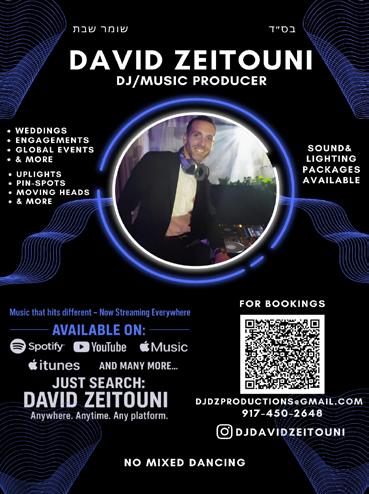
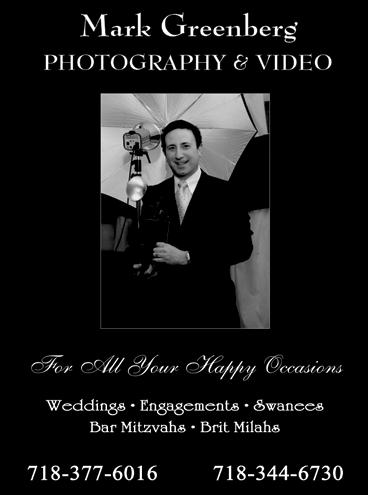

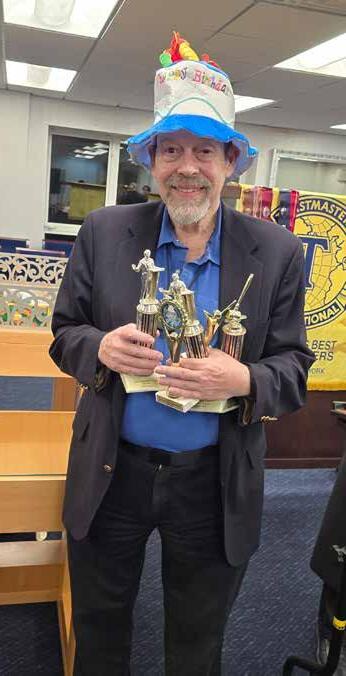
Until recently I had no idea the accomplishments of some members of Brooklyn Best Toastmasters. Here are some examples to highlight where some of our Toastmasters have been.
Does the name Ari Siegel ring a bell? Not only was Ari on the famous show Shark Tank, where he ultimately struck a deal with multiple members of the show, but Ari was also a member of Brooklyn Best Toastmasters.
Ever heard of Old Jewish Men of New York? It’s a popular tag on social media, and our very own David Roffé is the face of Old Jewish Men, which has millions of followers. If you’re lucky you may even catch David at one of our meetings. Not to be outdone by his amazing wife, the extraordinary Sarina Roffé. I wouldn’t even know where to start with the many accomplishments of Sarina.

And then there are community members like Ronnie Tawil and Alan Kishk, among others—all terrific speakers. These are men and women just like you and me who decided to take control. It’s not a miracle drug, but if you do the work that Toastmasters has to offer, you’ll see a world of difference.
So, what are you waiting for? Meetings are held twice a month from 8:00–9:30 PM on Monday evenings at Sephardic Synagogue on Avenue R. Email bbtm1234@ gmail.com to get on our list.




DEBBIE GUTFREUND
JON KRAKAUER DESCRIBES REACHING THE TOP OF MOUNT EVEREST IN HIS BOOK, INTO THIN AIR: “STRADDLING THE TOP OF THE WORLD, ONE FOOT IN CHINA AND THE OTHER IN NEPAL, I CLEARED THE ICE FROM MY OXYGEN MASK, HUNCHED A SHOULDER AGAINST THE WIND AND STARED ABSENTLY DOWN AT THE VASTNESS OF TIBET. I UNDERSTOOD ON SOME DIM, DETACHED LEVEL THAT THE SWEEP OF EARTH BENEATH MY FEET WAS A SPECTACULAR SIGHT. I’D BEEN FANTASIZING ABOUT THIS MOMENT, AND THE RELEASE OF EMOTION THAT WOULD ACCOMPANY IT, FOR MANY MONTHS. BUT NOW THAT I WAS FINALLY HERE, ACTUALLY STANDING ON THE SUMMIT OF MOUNT EVEREST, I JUST COULDN’T SUMMON THE ENERGY TO CARE.” (JON KRAKAUER, INTO THIN AIR, P.5)
Iwas so startled by his description I had to read the paragraph a few times. It shook me up that a person could work for years training for a climb like this, dreaming about standing on the top of that mountain, looking out at the thousands and thousands of feet that he had found a way to rise above and be too tired to care.
But this happens often in life. We imagine that once we reach our destination, we will be ecstatic. We fantasize about that moment of happiness, but it is elusive, falling
so easily out of our grasps, disappointing us just at the moment when we are straddling the top of the world.
How can we find and hold onto joy in this world without it slipping out of our hands? The holiday of Simchat Torah provides an answer. As we dance with the Torah, we bask in the unique, eternal happiness that only Torah can bring into our lives. “It is a tree of life for those who grasp it” (Proverbs 3:18). Here are five ways that Torah brings us this lasting joy and life.




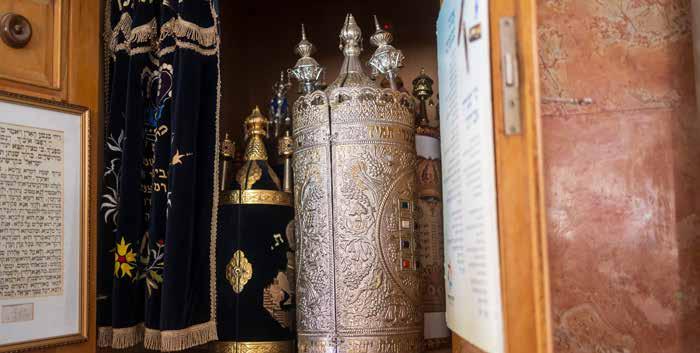
1. IT GIVES US HIGHER GOALS.
The highest predictor of a person’s lasting happiness is a goal that transcends himself. All of our personal goals, however important they may be, are part of a greater mission that all Jews share – to bring light to the world, to honor G-d’s Name, to pass on our sacred traditions. The Torah gives us higher goals to strive for.
Most people understand why gratitude increases our happiness levels, but we don’t necessarily know how to feel grateful on a daily basis. The Torah shows us how to be grateful several times each day. With prayer three times a day, with blessings over food and mitzvot. It imbues within us a constant awareness that we are receiving goodness and kindness from the Source of all life from the moment we open our eyes in the morning.
3.
Life is hard and often unpredictable. Many of us have different challenges that make it difficult to see a way forward. But the Torah teaches us that nothing is impossible. That G-d never gives us circumstances that we can’t handle. That tomorrow will be brighter. That redemption is in our future. That we are not struggling in vain.
4.
In a world where so many are lonely and dependent upon virtual company, the Torah pulls us each out of our isolation. It shows us how to set up communities and bring people together. It teaches us that we need each other. It helps us give even when we’re not sure how. It connects grandparents to their grandchildren. It bridges the cultural gaps that so often divide us. It gives us a
common language and a shared truth. It connects us to each other.
Our happiest moments occur when we are in the “flow,” completely engaged and absorbed by an activity we are doing. We transcend our physical and emotional limitations by immersing ourselves in the energy of the moment. Torah gives us this sense of flow when we are doing a mitzvah that is challenging for us but within our grasps. We visit the sick even when hospitals make us nervous. We invite the widow from across the street to Shabbos dinner even though we aren’t in the mood for guests. We give tzedakah even though we are anxious about our finances. We choose to overcome a limitation inside of us and move forward even when we have to push ourselves to do so.
But the Torah also gives us this sense of flow through song and dance. This is the flow of Simchat Torah, celebrating the Torah that teaches us how to transcend our limits, how to be happy, how to be connected. How to sing songs that weave circles into circles that climb beyond the dancers themselves. The words that we sing bring us back to the core of who we are. The higher goals, the gratitude, the hope, the sheer joy of connecting to our Creator. For this moment He created us. For this joy He created the world. It is a happiness that won’t slip away whether we are straddling the top of the world or just beginning our climb. It is in fact right there in our arms – the gift of the Torah that He gives to us. A happiness, a joy, that dances beyond itself.
Debbie Gutfreund is an OCD and trauma therapist. She holds a BA in English from the University of Pennsylvania and an MA in Family Therapy from the University of North Texas. In her free time, she is a competitive runner and skier. She lives in Parkland, Florida with her husband and children.




RABBI MEYER LANIADO
While my wife was in labor, I prepared myself for a powerful and uplifting spiritual experience. I stood by her side with only the doctor and nurse in the softly lit room, and began reciting Tehillim. After a few short minutes, I noticed hospital staff entering the room very quickly: two, three, four, then what seemed like ten. Lights brighter, movements quicker, frenzy where just before was calm. Without knowing how I got there, I found myself backed into a corner of the room. My heart was racing, my stomach in knots, everything uncertain. I could no longer focus on Tehillim. I put my head against the wall and began to cry. I felt, as we recite in our mahzor, Pahad veEma: fear and trepidation. I felt helpless, a passive observer with no control of the situation.
As I prepared myself for the worst, I heard a small cry, looked up, and there he was. Overcome with relief, joy, and
gratitude, I walked over to tell our son how much I loved him and I enthusiastically thanked G-d. As hard as I tried to express myself, I could not manage any more than sobs. Those eight minutes of uncertainty were terrifying — not the calm, uplifting moment of prayer I had imagined, but a plunge into feelings of fear, helplessness, and vulnerability.
We often expect spiritual highs to come when we experience awe, gratitude, or joy, such as when we behold a natural wonder or a momentous lifecycle event. Though, as we know, life does not solely consist of these grand moments. We often experience challenges and struggles, feeling low, fearful, and helpless. These moments of feeling helpless can also be a source of connection, inspiration, and spirituality. In these moments, when we acknowledge our vulnerability, we run, as Banim atem laDonai Eloheikhem (Debarim 14:1), as children into our Father’s embrace.




There are many biblical models of prayer in times of desperation and need. One of the most famous that serves as the model for our modern prayer is that of Hannah who, after so many years, remained childless. Yet, the shofar’s cry on Rosh Hashanah is modeled after an enemy of the Jewish people! (Tbavli Rosh Hashanah 33). The mother of the Canaanite general Sisera confidently waited by her window year after year, expecting her son to return victorious. When her son did not return, she cried out in desperation, recognizing her vulnerability (Shofetim 5:28-30). That is the cry of the shofar on Rosh Hashanah. While many of our Yamim Tobim and other holidays are about gratitude, our Yamim Noraim, Rosh Hashanah and Yom Kippur, are about relying on G-d, and acknowledging that some elements of our lives are not in our control.
Note how we plead with G-d on Yom Kippur. We do not say “thank you for all you have given me,” but instead, we recite phrases like: anshei Emunah abadu, “those whom we used to rely on are gone” and tamahnu meraot, tashash kohenu missarot, “I plead with you G-d because I have found my troubles bewildering, and they have sapped my strength.”
Sephardic communities open the first night of Rosh Hashanah with the prayer Ahot Qetana, written by Abraham Hazan Girondi (13th Century, Spain). It features the refrain tikhle Shana veqileloteha, let this year and its troubles end. This phrase closes each paragraph which details our need for G-d’s help. The song concludes with leSur hohilu, look hopefully to the Rock [G-d] and tahel Shana uBirkhoteha, begin this year with its blessings. Ibn Ezra (12th Century, Spain), too, expresses this message of turning towards G-d in distress in his famous poem, Lekha Eli, You are My G-d, with which we open Yom Kippur in Sephardic synagogues. There, referring to G-d, he writes leKha Ezra beEt Sara, heye Ezri beSarati… You are a helper in times of trouble; please be my help in my distress. Turning towards God for His support is also portrayed in one of the key phrases frequently repeated on our Yamim Noraim, lifnei Adonai Titharu, before G-d, we will be purified. Emphasis is often on the word Titharu, our purification, but maybe it belongs on the phrase lifnei Adonai, before G-d. Only when we shift our focus and turn our hearts toward Him, lifnei Adonai, relying on Him for His support, can we become tahor
Unfortunately, many view expressing vulnerability, and acknowledging that we indeed need help, as a show of weakness, so they try to save face by projecting that everything is under control. But the truth, as University of Houston professor Brene Brown suggests, is more likely that: “Vulnerability is the birthplace of love, belonging, joy, courage, empathy… If we want… deeper, meaningful spiritual lives, vulnerability is the path (Daring Greatly pg. 32).”
It is counterintuitive, but, in my view, she is right. When

we are open and honest, we let other people in, connecting more meaningfully and creating a deeper relationship. This is true both in our relationships with other people as well as with G-d. Challenging times when we feel afraid, uncertain, or distraught are not the moments we would choose to experience, but they are inevitable parts of every single one of our lives. They can lead to more enriching relationships when we are open and honest with ourselves and others.
When I put my book of Tehillim down on the bedside table in my wife’s hospital room, unable to recite, overwhelmed with fear and uncertainty, I began to reach out to G-d and plead. That moment is certainly one I would have chosen to skip over, but it helped me understand how asking G-d for help can deepen my relationship with Him.
The prayers and Torah portions of Rosh Hashanah and Yom Kippur acknowledge our vulnerability and need for help. We are asked to recognize that we are not in total control and to shift our paradigm from a world centered around the individual to one centered around G-d. As we chant the prayers and verbalize our transgressions in each other’s presence, we acknowledge our humanity, become aware of our individual and collective vulnerability, and unearth a unique opportunity to connect with our Creator and one another.

Did you escape Syria? Or leave between 1948 to 1994? It’s time to tell your story!
• What was life like for you in Syria? • How did you escape? or leave the country?
• Who helped you? • What was the path to escape? Over which border?
• How did you adjust to your new life?
Tell all the details of your story to prominent Syrian Jewish historian and genealogist Sarina Roffe for her upcoming book - Syrian Jewish Paths to Freedom. Interviews can be done on zoom, phone or in person. Photos welcome. Work is completed under the auspices of Sephardic Heritage Project - sephardicheritageproject.org
SEPHARDIC HERITAGE PROJECT
3603 Quentin Rd., Brooklyn, NY 11234
Go to www.sephardicheritageproject.org and click Donate to support our work.







THIS MONTH’S COMMUNITY PHOTO ALBUM HIGHLIGHTS THE EXCITEMENT OF A NEW SCHOOL YEAR. FROM FIRST-DAY SMILES AND CLASSROOM ACTIVITIES TO AFTER-SCHOOL CLUBS AND TEAM SPIRIT, OUR CHILDREN ARE STEPPING INTO LEARNING WITH ENERGY AND ENTHUSIASM. THESE PHOTOS CAPTURE MORE THAN JUST THE START OF ANOTHER ACADEMIC YEAR. THEY REFLECT THE FRIENDSHIPS THAT CONTINUE TO GROW, THE DEDICATION OF OUR TEACHERS, AND THE PRIDE OF FAMILIES CHEERING ON THEIR STUDENTS. WHETHER IT’S A GROUP PROJECT, A SCHOOL EVENT, OR A QUIET MOMENT AT A DESK, EACH PICTURE TELLS THE STORY OF A COMMUNITY COMING TOGETHER TO SUPPORT AND CELEBRATE EDUCATION.
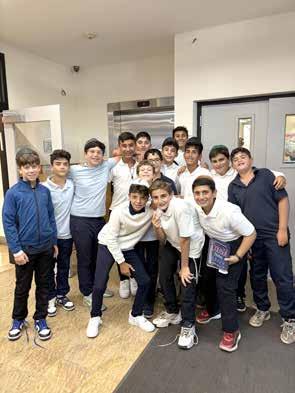


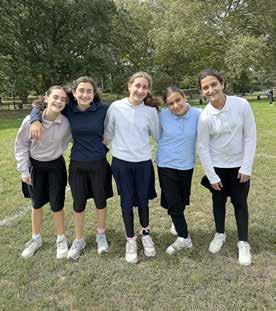







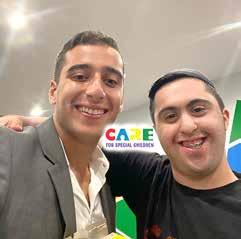











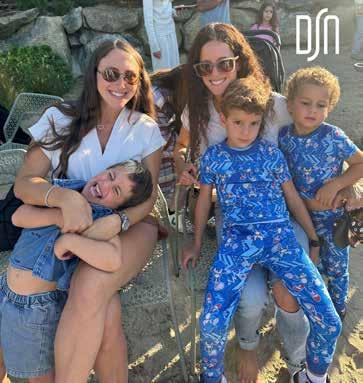
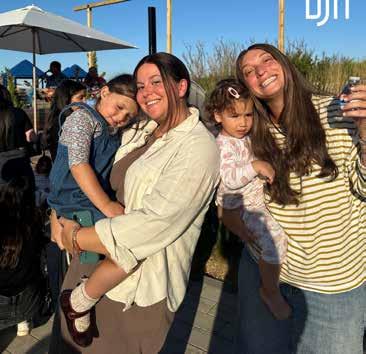

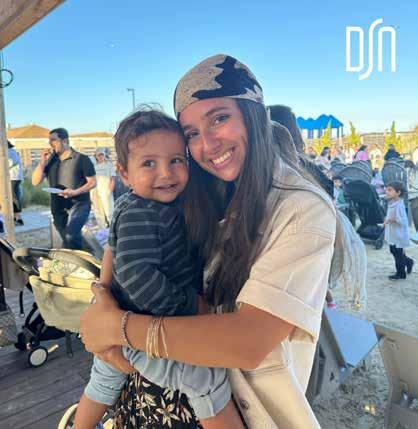



IN ANCIENT TIMES, SUKKOT WAS ALSO CELEBRATED AS HAG HA ASIFUSE, THE FESTIVAL OF THE INGATHERING, WHEN OUR PEOPLE GATHERED THE PRODUCE OF THEIR FIELDS AND VINEYARDS AND BROUGHT OFFERINGS TO THE BEIT HAMIKDASH, THE HOLY TEMPLE IN JERUSALEM. IT MARKED NOT ONLY THE CLOSE OF THE AGRICULTURAL YEAR BUT ALSO THE RECOGNITION THAT ALL BLESSING COMES FROM G-D. ALTHOUGH MOST OF US NO LONGER LIVE AS FARMERS, THE TORAH’S MESSAGE REMAINS TIMELESS. SUKKOT CALLS US TO LEAVE THE COMFORT OF OUR HOMES, DWELL IN THE SUKKAH, AND GIVE THANKS FOR THE ABUNDANCE WE ARE GIVEN. ONE OF THE WAYS WE CAN CONNECT TO THAT SPIRIT TODAY IS BY PREPARING FOODS THAT HONOR THE HARVEST, ESPECIALLY FRUITS AND SWEETS THAT REMIND US OF THE BLESSINGS SYMBOLIZED IN THIS SEASON.
As with every Jewish holiday, food has always been part of how we celebrate and remember. On Sukkot, desserts that feature pomegranates, figs, pears, apples, and honey bring forward both the flavors of autumn and the themes of sweetness and gratitude. Preparing them for family and guests in the sukkah becomes not just a culinary task but an act of remembrance, linking
us to generations past who celebrated the gifts of the land. The following recipes are designed to serve six to eight people, making them ideal for sharing at the holiday table. Two are parve, suitable after a meat meal, and two are dairy, perfect for a Yom Tov lunch. Each one reflects the season’s bounty and gives a beautiful close to your Sukkot meals.



Parve - Serves 8
Ingredients
• 1½ cups all-purpose flour
• 1 cup sugar
• ½ tsp baking soda
• ½ tsp baking powder
• ¼ tsp salt
• ¾ cup extra-virgin olive oil
• ¾ cup pomegranate juice
• 2 large eggs
• 1 tsp vanilla extract
• Seeds from 1 pomegranate
Instructions
Preheat the oven to 350°F. Grease and flour a 9-inch round cake pan. In a large bowl, whisk together flour, sugar, baking soda, baking powder, and salt. In another bowl, combine olive oil, pomegranate juice, eggs, and vanilla. Mix the wet ingredients into the dry until smooth. Fold in half the pomegranate seeds. Pour batter into the pan and bake 35 to 40 minutes, until a toothpick comes out clean. Cool, then scatter the remaining seeds on top for decoration.
Parve Serves 6–8
Ingredients
• 1 sheet parve puff pastry, thawed
• 3 ripe pears, peeled, cored, and sliced
• 3 tbsps honey
• 2 tbsps brown sugar
• 1 tbsp lemon juice
• ½ tsp cinnamon
• Pinch of salt
Instructions
Preheat oven to 400°F. Place puff pastry on a parchment-lined baking sheet. Arrange pear slices in rows on top. In a small bowl, combine honey, brown sugar, lemon juice, cinnamon, and salt. Drizzle over the pears. Fold pastry edges slightly inward to create a border. Bake 25 to 30 minutes until golden. Allow to cool slightly before serving.




Oh please! I can stop if I want to. Oh please!
I can stop if I want to. Oh please! I can stop if I want to. Oh please! I can stop if I want to. Oh please!











I can stop if I want to. Oh please! I can stop if I want to. Oh please! I can stop if I want to. Oh please! I can stop if I want to. Oh please! I can stop if I want to. Oh please! I can stop if I want to. Oh please! I can stop if I want to. Oh please! I can stop if I want to. Oh please! I can stop if I want to. Oh please! Oh please! I can stop if I want to. Oh please! I can stop if I want to. Oh please! I can stop if I want to. please! I can stop if I want to. Oh please! I can













If someone you love is showing signs of a marijuana addiction, don’t wait until they hit rock bottom. Reach out for help today. Confidentiality guaranteed.

Dairy Serves 8
Ingredients
• 1½ cups graham cracker crumbs
• 5 tbsps melted butter
• 16 ounces cream cheese, softened
• ½ cup sugar
• 2 eggs
• 1 tsp vanilla extract
• 2 apples, peeled and finely chopped
• 3 tbsps honey
• ½ tsp cinnamon
Instructions
Preheat oven to 325°F. Line an 8x8-inch baking pan with parchment. Mix graham cracker crumbs with melted butter and press into the pan. In a medium bowl, beat cream cheese, sugar, eggs, and vanilla until smooth. Pour over crust. In a skillet, cook apples with honey and cinnamon for 5 minutes. Spoon over cheesecake layer. Bake 35 minutes until set. Cool completely before slicing.
FIG
Dairy-Serves 6
Ingredients
• 1½ cups all-purpose flour
• ½ tsp salt
• ½ cup cold unsalted butter, cubed
• ¼ cup ice water
• 1 cup ricotta cheese
• 2 tbsps honey
• 6–8 fresh figs, sliced
• 1 tbsp sugar
Instructions
In a food processor, combine flour and salt. Add butter and pulse until mixture resembles crumbs. Add ice water gradually until dough forms. Shape into a disk, wrap, and chill 30 minutes. Preheat oven to 375°F. Roll dough into a 12-inch circle and place on a baking sheet. Spread ricotta in the center, leaving a 2-inch border. Drizzle with honey and layer fig slices on top. Fold edges over filling. Sprinkle figs with sugar. Bake 35 to 40 minutes until crust is golden.


These desserts do more than satisfy a sweet tooth. They remind us of the fruits praised in the Torah and the blessings that Sukkot urges us to acknowledge. By bringing pomegranates, figs, pears, apples, and honey to the table, we recall how our ancestors gathered their harvest
and gave thanks to G-D. Preparing and sharing these sweets in the sukkah allows us to connect our modern lives to the eternal message of ḥag hāʾāsif—that gratitude, joy, and blessing come when we recognize all that we receive from above.




ONE OF THE MOST FAMILIAR AND ELEVATING OF JEWISH RITUALS IN ANCIENT ISRAEL WAS THE THRICEYEARLY PILGRIMAGE TO JERUSALEM, THE ALIYA LAREGEL. JEWS CAME WITH THEIR FAMILIES AND OFFERINGS TO JERUSALEM TO CELEBRATE PESACH, SHAVUOT, AND SUKKOT, “TO BEHOLD THE PLEASANTNESS OF THE LORD AND TO MEDITATE IN HIS SANCTUARY” (TEHILLIM 27:4). IT WAS NOT ONLY A LIFE-CHANGING EXPERIENCE; IT WAS ALSO LIFE-SHAPING, LIFE-AFFIRMING. IT PLACED JERUSALEM AND THE HOLY TEMPLE AT THE EPICENTER OF EVERY JEW’S CONSCIOUSNESS. AND IT DID MORE THAN THAT.
The Aliya Laregel was a time of bonding for all Jews, as Jerusalem was celebrated as “the city that is united together” (Tehillim 122:3), the city “which confers fellowship on all of Israel. And when? Only when the tribes ascend together on the festivals” (Talmud Yerushalmi, Chagigah 3:6). All Jews assembled in Jerusalem: the young and old, the rich and poor, men and women, the various tribes from the north, center, and south of Israel. Despite the throngs of people, “no person ever said, ‘there is no room for me to lodge overnight in Jerusalem’” (Avot 5:5). The great medieval commentator Don Yitzchak Abarbanel noted that, in truth, it is a great miracle, that in an overcrowded setting, no one ever felt uncomfortable.
Even diverse levels of religious observance were muted on the festivals. All Jews were presumed to heed the laws of ritual purity. Everyone could eat other’s food and drink
each other’s wine. No Jew could be declared impure, such as with tzara’at, on the festivals. A nation that was divided into tribes – today, into political parties and religious factions – found its commonality on the festivals, with Aliya Laregel. Jerusalem, which we are taught was never divided among the tribes (Washington DC paralleled this practice), reached its spiritual apex on the holidays, as all Jews felt a deep, personal, and intimate connection with the Holy City, their nation’s capital and seat of government, the spiritual center of Jewish life, the place where the Divine presence was intensely experienced.
Imagine if Aliya Laregel could be revived today, not in the strictly halachic sense because the Holy Temple has not yet been rebuilt, but practically. Imagine if Jews from across the world ascended to Jerusalem three times a year on the festivals. The spiritual, political, and psychological







benefits would be enormous and overwhelming. We would strengthen the attachment of all Jews to each other, a connection that is often frayed for sundry reasons. Most simply, we would affirm in the eyes of the world (and Jews) the profound bond between the Jewish people and the city of Jerusalem, our capital since the time of King David – and a bond that is important to underscore in light of our enemies who seek to delegitimize and disenfranchise the Jewish people from Jerusalem and the land of Israel.
Imagine if all Jews, of all backgrounds and various ethnicities, gathered in Jerusalem on Pesach to re-experience our formative moment as a nation some thirty-three centuries ago, liberated from bondage to become G-d’s chosen people; on Shavuot, to reclaim the Torah as our heritage and birthright; and on Sukkot, to acknowledge and be grateful for G-d’s protective hand that has preserved us until today, after millennia of exile, persecution, and suffering, only to return us to our land, declare independence, and reestablish the Jewish state – a feat without precedent in all of human history.
Together, we would celebrate our origins (Pesach), our mission (Shavuot), and the blessings of Divine Providence (Sukkot).
The Jewish people would be uplifted and transformed.
The world – we can continue to imagine – would be galvanized to appreciate the extraordinary return of the Jewish people to the land of Israel and to the world stage in all our glory.
Reviving Aliya Laregel – the pilgrimage dimension of the three festivals – is more feasible than we might otherwise think. Many tens of thousands of Jews already come every festival to Jerusalem. The streets are packed, the Old City is alive, the Kotel is buzzing. We already have realized the vision of Zecharia the prophet: “Old men and old women will again dwell in the streets of Jerusalem, every man with his staff in his hand because of old age. And the streets of the city will be filled with boys and girls playing in its streets” (4:4).
That already is the reality – and the renaissance of Aliya Laregel will further unite all Jews and deepen our connection with Jerusalem. Start with one festival. Let’s do it!
Rabbi Steven Pruzansky is a Senior Research Associate at the Jerusalem Center for Applied Policy (JCAP.ngo), where he focuses on uncovering and sharing critical insights regarding Jerusalem’s international standing. He also hosts events and tours that explore the history and significance of Jerusalem.







LAURA SHAMMAH MS, RDN
Everywhere you turn, there’s a new diet promising dramatic results: “Drop 10 pounds in 10 days,” “Cut out carbs and reset your metabolism,” “Intermittent fasting is the secret to longevity.” It’s tempting to believe that the next trend will be the one to solve all your health struggles. But while quick fixes can spark short bursts of motivation, they rarely deliver lasting results.
Real health, energy, and balance come from something much less flashy: consistency.
Most people who try restrictive diets or aggressive health challenges discover the same pattern: initial success followed by burnout. Here’s why:
• They create an all-or-nothing mindset. If you “mess up,” it feels like failure.
• They’re unsustainable. Cutting out entire food groups or living in constant hunger isn’t realistic.
• They can backfire. Metabolism slows when the body senses deprivation, leading to regain once the diet ends.
That cycle leaves many people feeling like the problem is them, when in reality, it’s the strategy.
Habits aren’t built on extremes, they’re built on repetition. Your brain and body thrive when behaviors become predictable. Consistency supports health in ways that quick fixes can’t:
• Blood sugar stability. Eating regular, balanced meals helps prevent crashes and cravings.
• Hormone regulation. Your body feels safer and functions better with a steady rhythm.
• Sustainable progress. A 10-minute walk every day compounds into hours of movement over the month.
Small doesn’t mean insignificant. Here are a few examples of consistent choices that truly move the needle:
• Swapping soda for sparkling water most days.
do anything
Are unhealthy thoughts eating you Alive ?
• Normalize your eating habits and conquer your weight related fears
• Restore a healthy relationship with food
• Stop restricting/ diet cycle, binging, under/overeating, emotional eating and finally feel free to live the life you want!



A.K. A
Dr Doueck is an amazing dentist who is greatly talented, my teeth are not so easy to deal with Dr Doueck took care and had just so much patience with me and make sure I was happy every step of the way! I would 100 percent recommend Dr Doueck.

D.M. D
Dr Doueck combines state of the art equipment, skill, knowledge and experience with being a mensch. If he had a fan club, I would be its president. I have been his patient for more than twenty-five years. No one is like him.

Had an incredible experience at Doueck Dental this morning. I never thought a cavity removal could be a good time, but today I stand corrected. From the lovely welcoming faces that greet you at the door, to the charming yet masterful Dr. himself, Doueck Dental has yet again made my day and greatly improved my dental confidence. T.B. T

They are the best! Very careful and always coming in to check on me. And my teeth looking amazing!! Best people there too! If you're looking for a Dentist go here for anything you need for your teeth. 100% recommend V.S. V


Reviews are in, and smiles are wide. At Doueck Dental, advanced techniques and expert design create natural, radiant smiles—with custom veneers and precise implants tailored for you.

• Adding one serving of vegetables to lunch and dinner.
• Taking a short walk after meals to support digestion and blood sugar.
• Going to bed 20 minutes earlier each night.
• Planning protein at every meal.
Over time, these choices compound. One skipped workout or indulgent meal doesn’t undo progress; it’s the overall pattern that counts.
Today, many people are using GLP-1 medications like Ozempic or Mounjaro to help with appetite control and weight management. These can be powerful tools, but they’re not magic wands.
Even with GLP-1s, consistency and healthy habits are non-negotiable. Why?
• These medications may reduce appetite, but they don’t teach you what to eat.
• Long-term success still depends on balanced meals, exercise, hydration, and sleep.
• Without consistent habits, it’s difficult to find true, lasting success in both mind and body.
Think of GLP-1s as training wheels—they can provide stability, but you still need to learn the skills to ride the bike.
It’s natural to want results yesterday. But just like planting a seed and tending to it day after day, health requires patience. Consistency may not give you dramatic overnight change, but it offers something much more valuable: progress that lasts.
Consistency is the quiet, steady force that transforms health. Quick fixes may create excitement, but it’s the daily, repeatable habits that build energy, confidence, and resilience. Whether you’re adjusting your diet, adding movement, or even taking GLP-1 medication, the real “cure” is in showing up again and again.
Small steps, done consistently, will always outshine big leaps that can’t be sustained.
Laura Shammah MS, RDN specializes in eating disorders but has clientele that run the gamut from people dealing with PCOS, infertility hypertension, high cholesterol, Crohn’s disease, diabetes and cancer. She also helps clients who run in marathons, are pregnant and those who would like to lose or gain weight in a healthy way.


Tired of diets that don’t work?
We offer GLP-1 weight loss programs using breakthrough treatments like Ozempic, Mounjaro, Zepbound, Semaglutide and Tirzepatide, combined with expert care and ongoing support.
Our Packages Include:
* Medical consultation
* GLP-1 hormone treatment
* Custom nutrition plans
* Monthly check-ins
* Wellness boosters & more

CHARLIE KIRK INSPIRED A GENERATION WITH HIS PASSION AND PURPOSE. IN THE WAKE OF HIS HORRIFIC MURDER, HOW CAN WE DRAW MEANING AND DIRECTION FROM THE LIFE AND EXAMPLE HE LEFT BEHIND?
Ifirst heard the name Charlie Kirk in 2013, during a meeting with a prominent California philanthropist who supported Hasbara Fellowships, Aish’s campus proIsrael advocacy program I had founded. “Have you met Charlie Kirk?” he asked. I shook my head. His reply was instant: “He’s a powerhouse. He’s going to change college campuses for the better.”
At the time, it sounded like the kind of bold prediction donors often make. But in this case, he was right—though even he couldn’t have foreseen just how far Kirk would go. A college dropout from suburban Chicago, Charlie Kirk didn’t just influence campuses; he transformed the political landscape. As founder of Turning Point USA, he built the largest grassroots conservative movement in the nation, rallying and empowering students across all 50 states.
His brutal assassination has left so many reeling. The man who reshaped a generation of conservative activism— who embodied drive, conviction, and an unshakable belief in America’s future—was cut down in an act of senseless violence. The shock is still raw. Yet in the face of this horrific loss, we are left to wrestle with what his life meant, and what we can learn from the example he set. Here are my biggest takeaways I think we can learn from Charlie Kirk.
We can deeply believe in our own cause and fight for
it vociferously—without demonizing or ostracizing those we disagree with. It is shockingly sad to see the state of political discourse in America today. Politicians, media personalities, and social media influencers compete to paint their adversaries in the darkest possible light. Each side proclaims that the other is destroying the nation.
Earlier this year, liberal commentator Keith Olbermann posted on X: “Every Republican is complicit. Every one of them is a collaborator in the destruction of America.”
On the other side, right-wing commentator Steve Bannon declared on his podcast: “The radical left are demons. They worship power and chaos. They hate G-d, they hate America, and they hate you.”
Charlie Kirk stood for something else—conversation. He was known for setting up in the middle of college campuses and letting anyone engage him in debate. He offered the microphone to anyone who disagreed with him, though that person needed to be ready to have their ideas challenged. Charlie wasn’t a pushover and he had an agenda. But his agenda was to win the battle of ideas, not to demonize his opponents.
In this way, Charlie’s tactics echoed Jewish tradition. The Talmud is filled with debate, and two of its most famous combatants, Hillel and Shammai, disagreed constantly. Yet their aim was always to arrive at truth—not to humiliate or delegitimize the other side.
We can believe deeply in our own ideals while remain-


ing committed to listening and respecting others. That’s the only way we can build our society.
Charlie Kirk made support for Israel a central platform of his advocacy. He spoke powerfully about Israel as both a strategic ally of the United States and a moral beacon in the Middle East.
In the past year, however, that position has become less popular among many outspoken conservative personalities. Bashing Israel—and even crossing the line into outright antisemitism—has sadly become increasingly normalized on right-wing podcasts and social media. Charlie would have none of it.
He argued that Israel was a key ally in the fight against America’s worst enemies, which in turn made Americans safer. He believed firmly that Israel held a historic right to the Land of Israel and was acting morally in defending itself.
At a time when young American conservatives are being fed hateful lies about Israel’s “bloodthirsty” intentions or its supposed attempts to drag America into unnecessary wars, Charlie Kirk offered another vision—one grounded in reason, knowledge, and passion.
In Charlie Kirk’s early years of public advocacy, religion played little role in his message. But over time, he became increasingly outspoken about his faith and values. He argued that America was founded on G-d-given rights and responsibilities, and that the erosion of these core beliefs was fueling many of the nation’s ills and its growing sense of directionless drift.
Charlie was not seeking to evangelize. In fact, he was a deep admirer of Judaism and a loyal friend of the Jewish people. Yet he was unafraid to wear his religious convictions
on his sleeve, insisting that faith was not the problem but the solution. For him, religion offered timeless answers to society’s deepest challenges—anchored in ideals like self-worth, charity, personal responsibility, strong family and moral clarity.
Adam Rubenstein eulogized Charlie Kirk in the Free Press, writing: “He had a mission. It filled him with meaning. And that, above all, was why he convinced countless young people to listen to him, to change their lives for the better, to stand up for things that used to be called common sense.”
Judaism teaches that we are responsible for making the world a better place. We believe the values and morals of Judaism give us the tools to solve the world’s problems. And we believe deeply that if we are working to improve the Almighty’s world, He will help us succeed.
Charlie Kirk lived with this clarity. He knew he was responsible for fighting for a better America and a better world. He poured relentless passion into his mission, winning over countless allies, partners, and supporters.
His murder should stir us to reflect on these questions: What are we passionate about? What is our mission? How can we change the world? Charlie Kirk’s legacy—and the shocking way his life was cut short—urges us to face them with renewed seriousness and purpose.
May Charlie Kirk’s memory be a blessing, and may the impact he made in all these areas continue to inspire and endure far beyond his physical life in this world.




These are the programs Beth Sifra ran Separate Orthodox Boy Scout 8 Girl Scout Club • Matchmaking • Trips and Rallies • Free Legal Advice Jewish Films Jewish History Classes • Job Placement • Boxing & Wrestling • Men's Karate • Women's Karate • CSW on Premesis-Business School • Brisim Performed • Speakers Bureau • Free Hebrew School • Free Summer Camps • Nursery schools • Jewish Services • Boxing- High School Programs In Public Schools • Chess Tournament • Free Bar Mitzvahs • Several English Classes (Green Cards) • Work Release Programs • Release Hours • Free Flee Market • Homeless Shelter

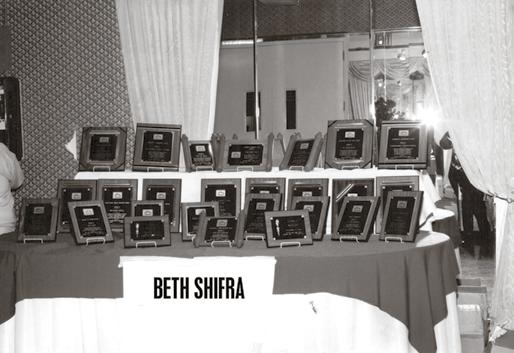
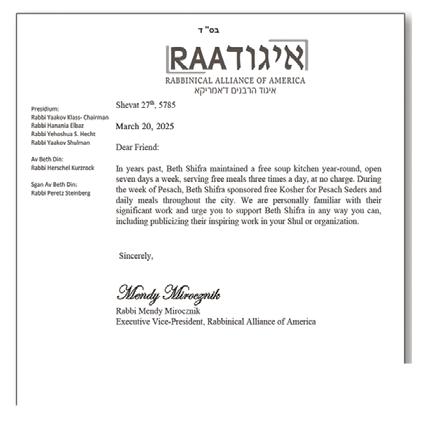


RABBI DR. YOSEF LYNN
YOU ARE NEVER STUCK. YOU ARE A WORK IN PROGRESS. AT THE HEART OF JUDAISM IS THE BELIEF THAT PEOPLE ARE NOT STATIC—WE ARE WORKS IN PROGRESS, CAPABLE OF TESHUVAH (REPENTANCE AND TRANSFORMATION). THE HEBREW WORD TESHUVAH LITERALLY MEANS “RETURN,” BUT IT REPRESENTS FAR MORE THAN SIMPLE REPENTANCE. IT’S THE RADICAL IDEA THAT WE CAN FUNDAMENTALLY CHANGE WHO WE ARE, THAT OUR PAST MISTAKES DON’T DEFINE OUR FUTURE POTENTIAL.
Moses initially doubted himself, saying he wasn’t eloquent enough to lead. Yet he grew into the greatest prophet and leader of the Jewish people. True greatness is born not from flawless strength, but from the courage to grow.
The Mishnah tells us: “According to the effort is the reward” (Ethics of the Fathers, 5:23). Not according to the outcome, not according to natural talent—according to the effort. Our Sages understood that the process of striving, even when we fall short, is where true value lies.
Think of the patriarch Jacob wrestling with the angel. He emerged wounded, but transformed, earning the name Israel—“one who struggles with G-d.” His injury wasn’t a
defeat; it was a badge of honor, proof of his willingness to engage in the struggle of growth.
Even our greatest sages lived this truth. Rabbi Akiva didn’t begin learning Torah until the age of 40, starting as an illiterate shepherd. Through tremendous effort and dedication, he became one of our greatest teachers. His story embodies Judaism’s timeless conviction: it’s never too late to begin, and your starting point doesn’t determine your destination.
This Jewish way of thinking finds a fascinating parallel in modern psychology. In her groundbreaking book











Mindset: The New Psychology of Success, psychologist Carol Dweck describes two fundamental ways of seeing ourselves:
• Fixed Mindset: The belief that our talents, intelligence, and character are static traits—carved in stone and unchangeable.
• Growth Mindset: The understanding that our abilities can be developed through dedication, hard work, and learning from failure.
Echoing something Judaism has always known, humans are works in progress, constantly capable of change and renewal.
The growth mindset transforms how we define failure. Instead of seeing setbacks as proof of our limitations, we begin to view them as data points for improvement. This shift is profoundly liberating—and profoundly Jewish.
That’s part of the reason why Judaism has always been wary of permanent labels. The Talmud tells us that even someone who has committed serious transgressions can completely transform themselves. A person can change their entire spiritual trajectory in a single moment of sincere teshuvah.
This perspective invites us to add one small but powerful word to our self-talk: “yet.”
• Not: “I’m not good at math.”
• But: “I’m not good at math—yet.”
By adding yet, we acknowledge our present reality while refusing to make it permanent.
How can we cultivate this growth-oriented perspective in our own lives?
• Reframe challenges as opportunities: When facing a difficult situation, ask “What can this teach me?” rather than “Why is this happening to me?”
• Embrace the learning process: Celebrate small improvements and view mistakes as valuable feedback, not personal failures.
• Use growth language: Replace “I failed” with “I learned.” Replace “This is too hard” with “This will take time and effort.”
• Find your learning partner: Surround yourself with people who challenge you to grow, not those who simply affirm your current level.
Ultimately, cultivating a growth mindset is a spiritual practice. It requires faith—faith in our capacity to change, in the value of effort over outcome, and in the possibility that tomorrow’s version of ourselves can transcend today’s limitations.
This faith is deeply Jewish. Jews are the people who believe that a stuttering shepherd can become the greatest prophet and leader, that a barren woman can become the mother of nations, that slaves can become a light unto the world.
As you navigate your own growth journey, remember: the path isn’t about perfection—it’s about progress. Every challenge you face is an opportunity to choose: Will you see this as evidence of your limitations, or as a chance to expand your capabilities?
And the next time you catch yourself saying “I can’t,” try adding that transformational word: “yet.” In that simple addition, you’ll find not just a change in language, but a change in possibility—and perhaps, a return to one of Judaism’s most fundamental truths: we are all works in progress, beautifully and eternally unfinished.




Available New Developments: Bentley, St. Regis, Onda, Casa Bella etc... Emma K amagi
917-743-2020 realtoremma@yahoo com

Bellini 5850 sf 6bedr 7 bath gorgeous view, move in direct ocean intracoastal golf view
Hamptons South 3 bdr + den, 3.5 bath, hi oor,
The Landmark 3 bedrooms, direct ocean pool, golf and lake view. Best line in the bldg. Rarely on the market
Mystic 500 2/2 completely renov Bay Marina Pool view
Hamptons South 2 bedr + den 3,000 sf Bellamare 3 bedr 2.5 bath spectacular ocean bay view furnished RENTALS
Hamptons South 3 bedr + den, furnished, pool, intracoastal golf view
Hamptons South 3 bed, 3.5 bath + den furn, direct ocean intracoastal lakeview
The Landmark 3/3 best line Direct Ocean view and golf view
Turnberry Village 2/2 furnished Golf and lake view
Turnberry Terraces 3/2 furnished direct ocean intracoastal pool view
Turnberry Towers 3/2 completely remodeled ocean intracoastal pool marina view
Turnberry Towers 2bedr 2 bath completely renovated Mystic 200 2 bedr plus den corner unit Bay view









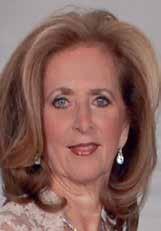








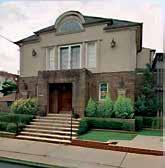










7 Bedrooms 4.5 Baths Finished Basement. Plus Third Floor. Set On 100 X 150. Plans for a pool. (Subject to Town Approval)
Taxes 14,893 Year.

Move in condition9 bedrooms 5.5 bathsGlorious ocean and lake views!





Four family compound with two car garage; Close to beach, shopping, dining, houses of worship and more!
Clean contemporary ranch with Four bedrooms 3.5 baths on large property plus nanny quarters .Close to beaches close to Deal , close to houses of worship and, golf clubs and more !
Ave K & Nostrand Ave - Space for Lease - Large open space on desirable first floor and basement. Almost 2,000 sq’ most of which is on the first floor. Owner will build to suit!
Ave I & East 16th Street – PRICE REDUCED!! 1 bedroom co op for sale in doorman building. This apt is on the first floor facing the front of the building. Beautiful sunken living room. Separate dining area. Large master bedroom with great closets. BRAND NEW BATHROOM!! Kitchen and bath have windows. SERIOUS SELLER! NOW ONLY $288K
Kings Hwy & East 32nd – DEAL DIED!!! GREAT OPPORTUNITY FOR YOU!!! Looking to start your investment portfolio? Amazing 2 fam brick house. 2 bedrooms in each apt, private parking, garage. Great for user/investor or 1031 exchange. ONLY $999K
Ocean Parkway & Ave O – Studio co op for sale on 1st floor of very desirable building. MICONLY $225K
East 12th & Ave L -This 3 bedroom, 3 ½ bath detached home was completely renovated and completed in 2019. Gorgeous living room and dining room, magnificent kitchen, radiant heat throughout the entire house, master bath and great closets. Central air with 4 zones. Master bedroom has its own zone. Totally finished basement!! Camera and alarm system. Private parking!! This magnificent home is on an amazing block!! Won’t last! Asking $2.2m East 20’s & Avenue N – Semi detached 4 bedroom 2 bath house in great condition. Private parking, garage, rear patio. ONLY $1.15M Marine Park – East 32nd – JUST LISTED!!Legal 2 fam brick house in MIC, shared drive COMING SOON! East 20’s & Ave L PRIME BLOCK!! Gorgeous house on 40 X 100 lot!! OFF MARKET !! Teens & Ave O – Huge det 3 story 2 fam home on 35 x 100 lot. Fin attic and fin basement. Private drive. $2M









Brooklyn Commercial Spaces for Lease Ave P–½ block to F train. Has its prv entrance accesses, 24/7 & amenities, suitable for wholesale, medical, real estate, accounting, attorney, yoga, etc. Text Isaac Douek 917-913-0177, isaacnyc@ aol.com
Ocean Parkway Avenue S–First floor, approximately 1,100 square feet Contact broker 917497-5432 Emanuel@Realty 26 Associates.
GARAGE SPACE FOR RENT BKLYN
2 Car Garage available for storage only. Ideal for plumbers & electricians. Call 718-851-1132 for more info.
Ave J/East 3rd. Detached luxury corner property for sale. 31x95 lot, private drive. ADIR PROPERTIES 347-884-7309.
East 2nd St / Quentin Rd–Legal 2-family luxury home featuring two fully renovated 5-bedroom, 3.5-bath duplexes, private parking, and over 4,200 SF of space, plus a finished basement. Oversized 25x117 lot, 20x71 building. Includes Sub-Zero kitchen and landscaped yard. Prime location near shops and dining. Call C21 MK Realty: 917-288-4001
East 10th St / Avenue J–Oversized legal 2-family home! Owners’ duplex with 4 bedrooms, 3 bathrooms, deck, and basement access. First-floor 2-bedroom unit plus bonus rooms. 40x100 lot, 27x40 building with private driveway. Endless potential. Call C21 MK Realty: 917-288-4001
East 4th St / M & N – Detached 1-family on 30x100 lot. 3 stories plus finished basement with 9-ft ceilings. 5 bedrooms, 4.5 baths, driveway, and spacious backyard. Great layout with endless potential. Call C21 MK Realty: 917-2884001
East 5th St, between Ave M & N – Renovated, move-in-ready home on a tree-lined block. Features den, living & dining rooms, eat-in kitchen, 4 bedrooms, finished basement with playroom, office & bath. Porch, backyard, shared parking, and multiple AC systems. Call C21 MK Realty: 917-288-4001
East 14th St & Ave R – Remodeled semi-detached 1-family with open living/dining, modern kitchen, 5 bedrooms, 3.5 baths, and finished basement. Features include laundry room, porch, backyard, garage, shared driveway, hardwood floors, and split A/C. Close to transport, shopping, and dining. Call C21 MK Realty: 917-288-4001
East 24th St & Ave R – Fully detached 1-family on 40x100 lot in prime Madison. Bright layout with 3 bedrooms, 2.5 baths, and plenty of natural light. Private driveway, detached garage, and great potential to create your dream home. Call C21 MK Realty: 917-288-4001
Bedford Ave & Ave N – Detached 1-family in prime Midwood with side hall layout, spacious living/family rooms, dining room, eat-in kitchen, and den. Features 4 bedrooms, 2.5 baths, finished basement, backyard, and 2-car garage. Great opportunity in a top location. Call C21 MK Realty: 917-288-4001
For Sale or Rent: 4,000 sq ft office space in West Long Branch, NJ, featuring parking for 12 cars, additional handicap parking, and wheelchair accessibility. Conveniently located near Route 36. The property includes a separate 2-bedroom house and an additional rear lot ideal for development. Offered at $1.99M. Call or text: 917-385-9247
Ave L & E 21st St – Spacious home with 5+ bedrooms, 3.5 baths, master suite with walk-in closets, and balcony. Features finished basement with Kosher kitchen, private driveway for 3–4 cars, and secluded backyard. Convenient location near shuls. Call C21 MK Realty: 917288-4001
E 27th St, Ave R & S – First time offering! True Center Hall Colonial with grand foyer, sun-filled living room w/fireplace, formal dining, and large eat-in kitchen. Features 4 oversized bedrooms, 2.5 baths, full basement, private drive, and garage. Call C21 MK Realty: 917-288-4001
Mystic Pointe 500 – 2 Bed, 2 Bath, 1,181 SF condo in Aventura, FL. Great views! $20K price reduction. Yossi Razon, Related ISG, 917-2876752.
Available timeshares at Ocean Club & Surf Club. 1,2,3 bedrooms available. Call Rachel 917-685-0048
Marriott Aruba Surf Club January 11th 2026–January 18th 2026 and or January 18th–January 25th. 2 bed/ 2 bath, Ocean View. Call Mitchell 516-509-1940
Marriott Aruba Surf Club- 2bdrms, 2 bath, full kitchen, laundry. Sleeps 8, Jan 16- Jan 23, 2026. Call or text Boni (973) 723-1611











New construction.
Detached family home! Private parking, excellent condition. 3 bdrm, 2.5 bath, central air, finished basement. Gorgeous outdoor space. $2.69m
Detached one family with private driveway, master suite, radiant heat, central air, stunning! $1.99m
Detached, 30x100, 6 bedroom, master suite, private driveway.
Priced to sell!
$2.5m
Magnificent legal three fam home. Gut renovated, excellent investment opportunity or live in while collecting income. Prv parking, 3 bdrm, 2 bath over 3 bdrm, 2 bath over 2 bdrm, 2 bath over full fin bsmt. $2.65m
Detached 40x100 with private driveway.
Priced to sell!
$2.4m
Detached 40x100 stunning two family, 4 bedroom triplex with master suite and den, plus 3 bedroom apt for income. Private driveway!
-
Brick beauty. Gorgeous removed two family with private driveway. Spacious and beautiful!
Mini mansion for sale. Gorgeous huge det 40 x 125, 7 bdrm, 4.5 bath house. Magnificent kit, massive fin bsmt, prv drv and more.
Luxury One FamilyGorgeous with 4 bedrooms, den, stunning eat in kitchenParking & backyardExtra long lot, & extended $2.99m










Amazing location
Detached one family with private driveway
Attached 1 family Ave T prime!!! Excellent condition, 3 bdrms, 2.5 bath, den! Central air! Front and back porch. Finished bsmt.
6 bedroom, master suite, custom closets
Huge finished basement Fully renovated!
Magnificent 1 fam, 50 x 100 terrace home. Stunning 5 bdrm, 1 fam. Custom granite kitchen. Private parking and garage. Master suite and more. $2.39m MADISON PRIME CORNER!
JUST LISTED! AVE R/PRIME E
Detached beautiful one family Center hall layout, Huge living room, Separate dining room, Beautiful EIK, Den, 4 bedroom with custom closets, master suite with master bath Finished basement.
NEW LISTING/AVE J PRIME
Detached 30 x 100 1 fam home. Make it your own! $2.39m
Brick semi detached multi fam property. $9k monthly income. 3 apartments plus private parking. Excellent condition. $1.95m
Beautiful fully renovated Ave J PRIME
Rare opportunity. Brick legal two fam extra long 150 lot. Parking for 3 cars.
Rare opportunity. Brick legal two fam extra long 150 lot. Parking for 3 cars.
305 Ave O
Detached 40x100!
Two family with finished basement
Private driveway
Great condition
Huge gorgeous townhouse, legal two family home. 5 bdrm luxury duplex over 5 bdrm duplex. Master suites, den, magnificent kitchen, private parking. And more
AVE V
Spectacular brand new home!
Detached 30x100
Luxury two family with private driveway
Can easily be converted into one family
Magnificently done with high end finishes by top interior decorator, 3 bdrm, 3.5 baths, prv parking. $2.69m

Esther and Solly Mosseri – Boy
Kaden and Albert Terzi – Boy
Helen and Murray Mizrachi – Girl
Celia and Ben Spaeth – Girl
Celia and Jimmie Setton – Boy
Marie and Joseph Mazon – Girl
Tunie and Ralph Gindi – Girl
Claudia and Joe Epstein – Boy
Sylvi and Joey Esses – Girl
Fatima and Sol Sasson – Boy
Merle and Gabriel Rudy – Boy
Merlene and Ofir Zehavi – Boy
Henriette and Jack Laboz – Boy
Sonia and Maurice Mosseri – Boy
Claudine and Ezra Shiro – Boy
Yvette and Freddy Kassab – Boy
Jamie and Joe Ades – Girl
Vivian and Mosie Salame – Girl
Sara and Sam Mishaan – Boy
Renee and Jojo Tawil – Girl
Rosie and Joe Dana – Boy
Esther and Jack Katach – Girl
Mimi and Danny Mizrahi – Boy
Rachel and Ezra Khezrie – Girl
Rochelle and Eddie Jemal – Girl
Rebecca and Aaron Senior – Boy
Lucy and Max Soffer – Girl
Raquel and Albert Sultan – Boy
Tehila and Isaac Levy – Girl
Sally and Dovie Hoffman – Girl
Lauren and Ikey Salem – Girl
Announce Your Special Moment!
If you would like to include a birth, engagement, or wedding announcement in our magazine, please email the details to: editor@imageusa.com
New York City’s Trash Revolution is now reaching Brooklyn. The Department of Sanitation is introducing “Empire Bins,” large stationary containers placed on the street to replace the piles of black trash bags that have long lined sidewalks. Built to be rat-resistant and locked for security, the bins will be accessible only to building managers. Sanitation crews will service them with new side-loading garbage trucks designed specifically for this system.
The program requires larger residential buildings—those with 30 or more units—to use Empire Bins once they are installed. Mid-sized buildings with 10 to 30 units can choose between Empire Bins or smaller wheeled containers, while smaller homes already follow rules that mandate covered bins. The first phase in Brooklyn begins this fall with installations outside schools, with a wider rollout planned through 2026.
Although the bins take up some curbside parking space, city officials, including Mayor Adams, say the trade-off is worth it for cleaner streets and fewer rats. Manhattan neighborhoods that adopted the program earlier have already seen positive results, and Brooklyn is next in line to benefit. By replacing heaps of loose trash bags with secure containers, the city hopes to transform not only the look of its streets but also the overall health and safety of its communities.
A new scam known as the “Phantom Hacker” is targeting senior citizens and people of all ages who are not so tech savvy. It often begins with a phone call, text, or email claiming that a computer or financial account has been hacked. The scammers pretend to be from trusted companies or government agencies and pressure the victim to act immediately.
The fraudsters may ask the victim to download software that gives them remote access to a computer, or they may insist that money be moved into a “safe” account. In reality, that account belongs to the scammers, and once funds are transferred they are nearly impossible to recover.
The best defense is caution. Never agree to “fix” a problem on the spot or let someone you do not know take control of your computer. Always ask for a call back number and take time to check your accounts on your own. Be wary if someone pressures you to act right away or insists that something bad will happen if you hang up. These are clear signs of a scam. Verify phone numbers and emails against official company or government websites, and if you are unsure, call the official number yourself to confirm. If you think you may have been targeted, contact the New York State Attorney General’s Office, the NYPD, or the Federal Trade Commission for help and to report the scam.





















BORDEAUX STEAKHOUSE
1922 Coney Island Avenue, Brooklyn (718) 942-4040
CHINA GLATT
4413 13th Ave, Brooklyn (718) 438-2576
GLATT A LA CARTE
5123 18th Avenue, Brooklyn (718) 438-6675
GRUIT
252 Empire Blvd. Brooklyn (347) 846-0622
LA BROCHETTE
340 Lexington Avenue, New York City (212) 972-2200
LE MARAIS
150 W. 46th St., New York City (212) 869-0900
MIKE’S BISTRO
127 East 54th St., New York City (212) 799-3911
MOCHA RED
127 4th Avenue, New York City (212) 419-8889
NOI DUE CARNE
141 W 69th St., New York City (212) 712-2222
PESCADA
1776 Ocean Avenue Brooklyn (718) 766-2759
UN PLAZA GRILL
845 United Nations Plaza, New York City (212) 223-1801
URBANA
1305 53rd St., Brooklyn (718) 438-4448
WOLF & LAMB
16 East 48th St., New York City (212) 317-1950
656 OCEAN & STINGERS BAR & GRILL
656 Ocean Ave, Long Branch (732) 728-9656
BALAGAN
66 Monmouth Rd, Oakhurst, NJ 07755 (732)716-4200
BUTCHER’S STEAKHOUSE
401 Main St, Allenhurst (732) 686-1498
CRUST CO PIZZA
379 Monmouth Road, Long Branch (732) 229-2145
DIET GOURMET
167 Lincoln Avenue, Long Branch (732) 870-3287
DOUGIE’S BAR & GRILL
256 Norwood Avenue, Deal (732) 517-0300
DOWN TO EARTH
312 Main Street, Allenhurst NJ (732) 686-1597
GRANDMA’S CHEESE CAFE
101 Brighton Ave, Long Branch (732) 895-3621
JELI’S RESTAURANT
125 Ocean Avenue N., Deal (732) 686-9595
JERSEY SHORE SUSHI
250 Norwood Ave, Deal (732) 660-5393
OUTPOST RESTAURANT
125 Ocean Avenue N., Deal (732) 686-9595
PKS BY THE SHORE
244 Norwood Avenue, Oakhurst (732) 813-5757
PRIMAVERA RESTAURANT & BAR
118 Norwood Avenue, Deal (732) 430-2073
RETRO GRILL
214 Roosevelt Avenue, Oakhurst (732) 695-3119
SALT STEAKHOUSE
15 Morris Avenue, Long Branch (732) 813-7258
SHENG MAO CHINESE
214 Roosevelt Ave, Oakhurst (732) 531-7086
TAPAS
116 Norwood Ave, Deal (732) 660-1700
TEVA RESTAURANT
125 Ocean Avenue N., Deal (732) 686-9595


ABA THERAPY
Dr. Randi Matsas 109
ACCOUNTANT
Mitch Holsborg 87
ALARMS, CAMERAS & WIRING
EJS Technology Systems 132
APPLIANCE SERVICE
Astre Appliance Service 132 ATTORNEY
Expert Legal Solutions 85
Jack Erdos 79
Robert Akerman 91 BEAUTY CARE
Lauras Skin Care .......................... 111 BROADWAY SHOWS
Gazillion Bubble Show .................... 81 CAREER OPPORTUNITY
New York Life 75 CLOTHING/MENS & BOYS
The Garage Clothing 73 COLLEGE
Touro College 1 CONSTRUCTION
DRB Builders 133
HMS Construction 133
Joseph and Sons Builders 133
United Construction 133 DENTIST
Bass Dental Group 17
Dr Jacques Doueck ........ 109,111,113
Tawil Dental ................................. 107
DISC JOCKEY & LIGHTING
DJ David Zeitouni .......................... 87
DR.-INTERNAL MEDICINE
Dr. Ezra Israel 103
DR.-PRIMARY CARE
Rambam Family Health 12-13
DUCT CLEANING
Remex 91
EXERCISE PROGRAM
Club Pilates Kings Highway 83 EXTERMINATOR
A&V Prime Exterminating LLC 93 FACTORS
Hedaya Capital Group 9
Middlegate Factors 4-5
FINANCIAL ADVISORS & ESTATE SOLUTIONS
Power Forward Group .................. 136 FINANCIAL CONSULTANT
Endurance Wealth Partners 33
FISHING BOAT/FLORIDA
Therapy IV Capt Stan 117 FLOOD
Remex ........................................... 91 FLOORS
Modern Wood Flooring .................. 49 FURNITURE OUTDOOR
David Cohen Outdoor Furniture 132 HANDYMAN
Eddy Gindi 133
HERB SHOP
Roots & Remedies 61 INSURANCE
Allstate David Cohen 35
Dynasty Advisors/Jayne Levy ............ 85
Eli Cohen Agency 63
Eric Derzie & Associates .................. 41
INSURANCE ADJUSTER
Equitable Adjusters IFC,18-19 INVITATIONS
Invitations
